MySensors weather station
-
@wallyllama That would have been funny. There are 10 types of people in this world, Those that understand binary, and those that don't.
-
@wallyllama My only problem with this is that the hole that the LED fits in is slightly larger than 5mm, so that cone would need to be tiny.
-
@dbemowsk actually, you only have to illuminate the sensors that your slot faces, a 45° mirror or a reflector opposite the slot should help.
-
@gohan I tried putting a piece of tin foil in the hole, but it must not have been at the right angle.
-
Maybe a steel sphere? A white piece of plastic? Remember that you can use the smartphone camera to see the ir light coming from the led, in case you would like to see the result before assembling it
-
@gohan Yes, I have been using my smart phone camera. I use it all the time at work to test remotes. I have some other things to try later today. I will post my results.
-
Hello all,
I'd like to add to this discussion my bit,
here is code from my older project of arduino based, battery operated, solar panel charged weather station
https://github.com/Luc3as/MySensors-WeatherStation
I must finish all documentation, I have PCBs ready and manufactured and tested, and models ready for 3d prints too.
I am not measuring wind so I am also interested in nice work above.
for now it is still work in progress, here is little teaser of overall look
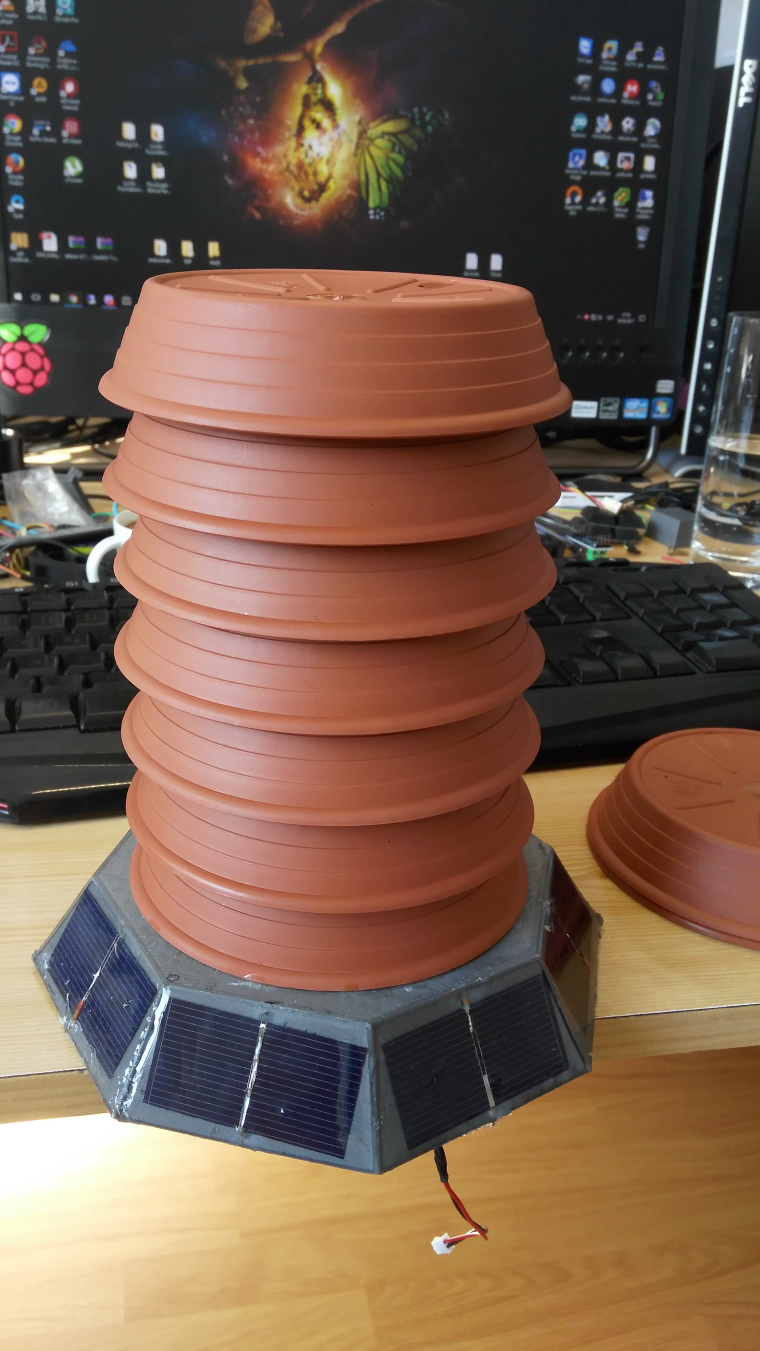
-
@Luc3as Thanks for the contribution. I have been quite busy the past few weeks and haven't had a lot of time to work more on the wind direction sensor. There are still a few issues I am working through with that before I can start jumping into the code for it. I am hoping to get more done this weekend.
As for your 3D files, do you have them on thingiverse or somewhere accessible for us to check them out? I am interested in the work you have done.
-
Those are quite a lot of solar panels. Is it that power hungry?
-
@gohan I can't see those small panels delivering that much. Plus, at certain parts of the day a number of the panels will most likely be shaded lowering their output.
-
@dbemowsk yup, actually there are 8 of them, each providing nominal 0,5 volts, so to power up the lipo charger for battery I need at least 4 volts, in direct sunlight I think this will not be problem, but as @dbemowsk says, it will not have ideal position to sun every day and for whole time. but there is big enough reserve at battery , providing power for few days to weeks even without solar panel.
and I am also checking voltage on solar panel so if there would be some problem with charging I can set notifications or something from home automation system.
-
I did some wind speed and direction sensor boards that I use in my own weather station design. All solid state and high resolution with analog signal readout, voltage for direction, 8 pulse per rev for speed. For inspiration see http://wws.us.to. Gary
-
@Luc3as if you put solar panels in series you will get resistance from the shaded ones (at least that is what I saw in some experiments) . It would be better to have a single one pointing south that gathers the most sunlight and that's it
-
@gohan said in MySensors weather station:
@Luc3as if you put solar panels in series you will get resistance from the shaded ones
That is correct, as far as what I have learned. Large monocrystaline and polycrystaline solar panels like the ones shown below have low to no output for the entire panel when one or more of the cells on a panel is shaded or covered.
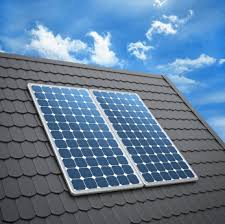
Amorphous solar panels like these have closer to full output with less drop-off in shaded areas, but have a lower overall amperage output than monocrystaline and polycrystaline panels.
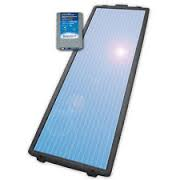
The cells that @Luc3as has in his pic appear to be monocrystaline cells. Each cell will produce about 0.5 volts, so depending on the batteries you are using and the charging circuit, you could put some of these in series to create a couple banks, and then put the banks in parallel, you may get some usable power to charge a battery.
-
@GaryStofer I was checking out your weather station design. Nice work. Out of curiosity, what did you use for your wind direction sensor?
-
@dbemowsk Initially I uses an AS5030 encoder, but then I switched to the EM-3242 as it's much cheaper and smaller and does the same. My board has an Op-amp inverter to change the sense of angle to voltage so that the magnet can run on the top of the chip rather than on the bottom. Only problem we had with the EM-3242 was that it has no hysteresis which shows up at the 360/0 junction.
-
So, I had put this project on hold for a bit, but I am back at it. One of the parts of the project that I will be talking about in this post is the rain gauge portion of this. I had started a thread on this part a while back, but decided that I would combine everything for the weather station in this thread.
So one of the things with this rain gauge was that I wanted to make it fairly accurate. In my "tipping bucket rain gauge" thread, @BulldogLowell had mentioned that an 8 inch opening on the funnel is typical for what is used commercially, so I went with that and designed this:
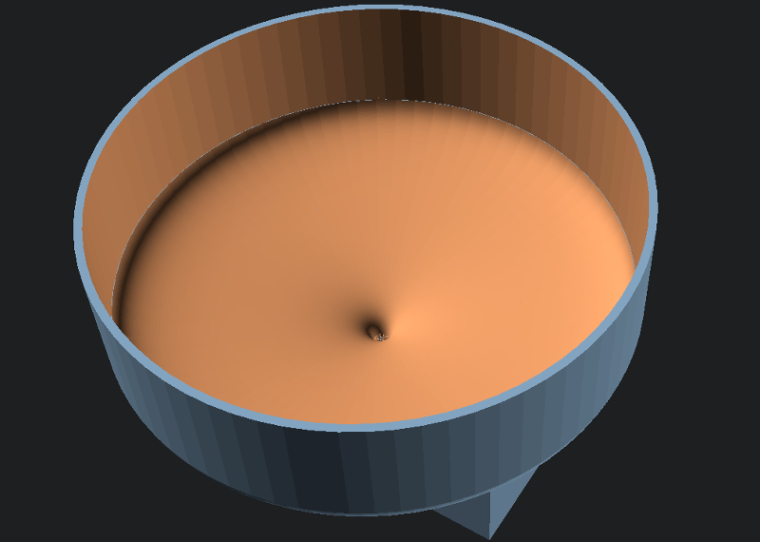
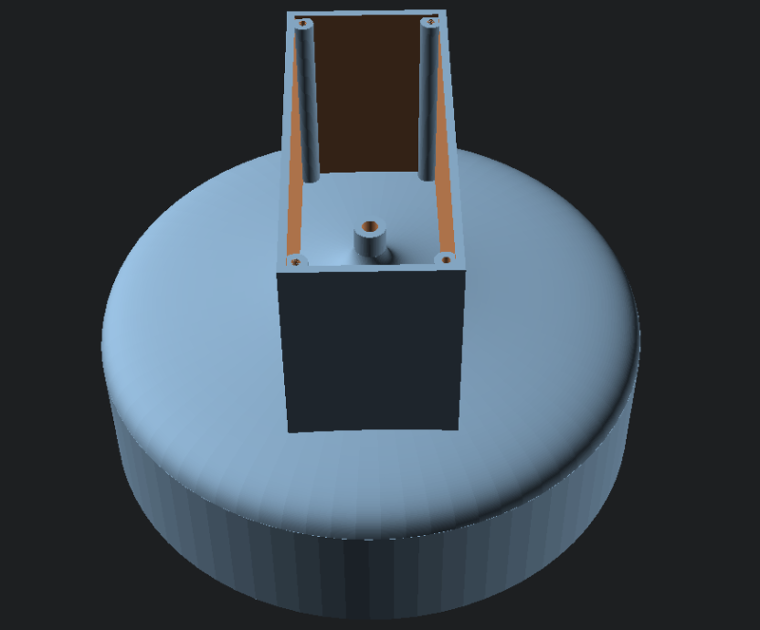
Before I could print this on the 3D printer, I needed to print some different parts for my printer to allow for it to print the large size of the funnel. I also did some research on what type of plastic I should use before printing this monstrous part. Something I should have looked into more before printing the wind direction vane and wind speed rotor. Being that this will be outdoors in the sun it will need to have some UV resistance. I ended up settling on e-sun PETG filament. According to this review that I read, there was this statement that sold me on it:"It can also maintain the finished product's toughness and prevent it from turning into a yellowish color. PETG also contains UV absorber and can serve as a protective layer from the influence of ultraviolet light."
At any rate, I just got my brand new roll of white and started the print:
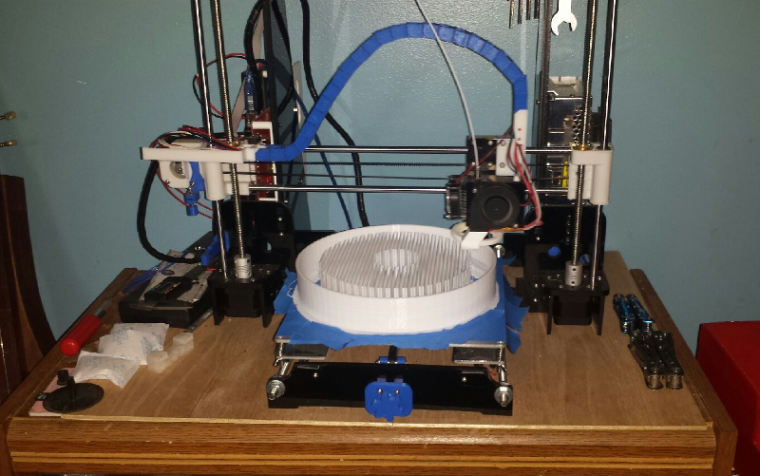
I am running at a 0.24 layer height which should be fine for this. I am printing at 30 mm/s. Cura says 44 hours 40 minutes for the print, but the times from cura are usually a bit short. I am betting on about 48 hours total print time. This will be the largest print job I have ever had the printer do. The picture is at about 17 to 18 hours into the print.Tonight I will be tweaking the design of the base that will hold the tipping bucket and sensor. I did some test prints a while back of the basic parts of this to see how they would function, and I think they worked well. This is the basic design that I have as of now:
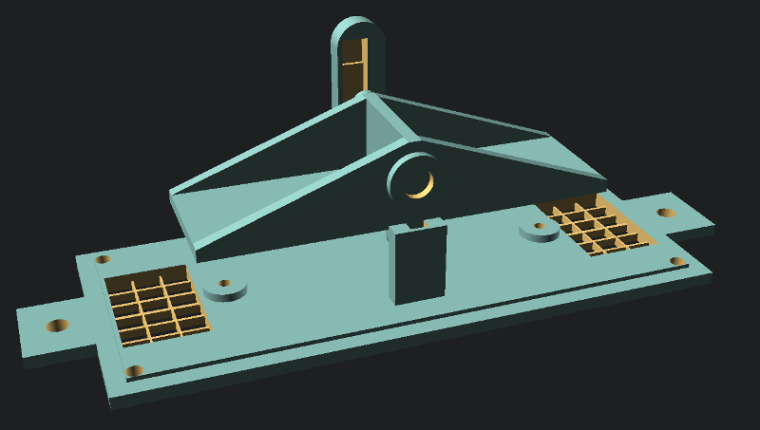
A few tweaks to this and it should be good. The main thing is going to be figuring out how I want this to mount/attach to the rest of the system with the wind sensors and the arduino. Since this will just have the reed sensor, I will need to account for how it will get wired to the arduino. I am open for any suggestions on how to attach this to the rest of the sensors. My plan was to have some PVC pipes as the supports and mount things to that. I will need to watch out for the drain holes when mounting.All in all I think the project is coming along despite having to put it on hold for a while. As always, I am open to any feedback or suggestions that anyone can give.
Thanks for reading.
-
thanks for this
one of my cups on my anemometer is broken might be able to tweak that file instead of starting from scratch now
-
@MasterCATZ the anemometer that I used was one that I found on thingiverse. The link is in the beginning of the thread, but I am sure you found that already. You may want to just create a whole new cup rotor for yours.
-
@dbemowsk that's quite a lot of support material
 ️
️
-
@gohan I agree, but I wanted to play it safe for when it got to the main funnel part. I opted to set the structure type to lines instead of a grid to at least keep the waste down some.
Just over 24 hours into the print. As you can see in this updated pic, it is just starting to get to what will be the top part of the funnel where it is tapering in.
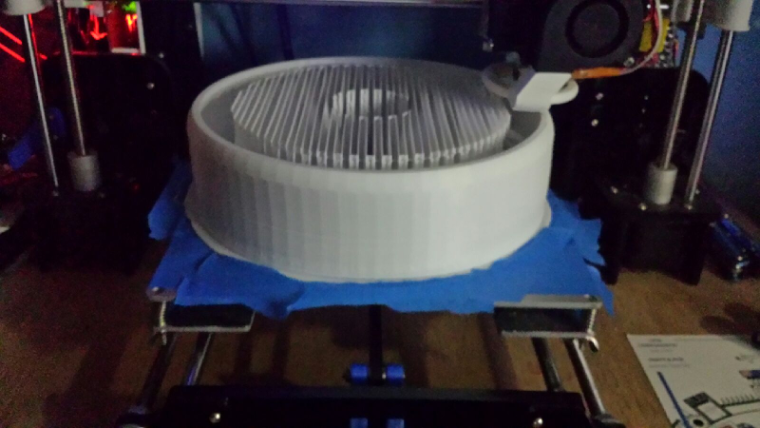
-
Just an update on the progress. It just started on the box this morning. Should be finished tonight at some point.
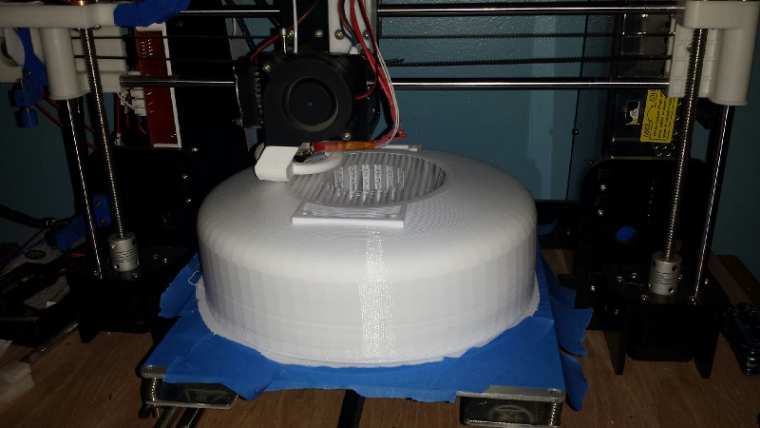
-
Hello,
I found this in the forum. Perhaps it helps for the wind direction detection.
https://forum.mysensors.org/post/17825
Especially here
http://www.philpot.me/weatherinsider.html
-
@marco4711 Thanks for the links. I still have a few more things that I want to try to get my setup working If it comes down to it, I may use MasterCATZ' idea of using a magnetic rotational sensor. I don't give up easily.
-
Well, the part finally finished. Roughly 46 hours. Overall, I think it will work good. It was a bit of a job clearing out all of the support material though.
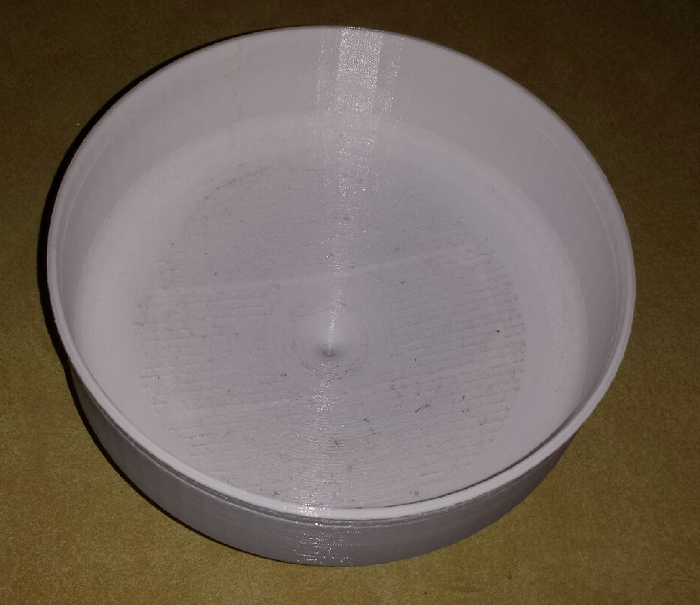
The bottom turned out well.
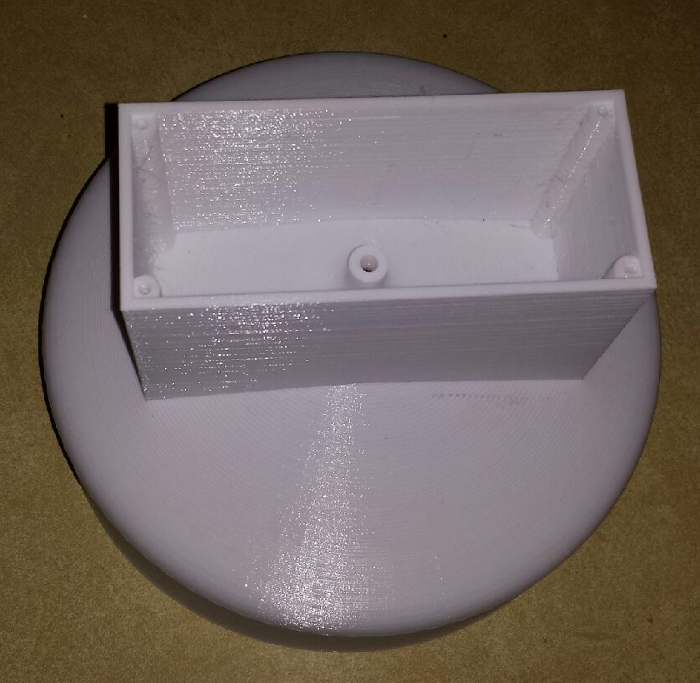
The first few layers had some issues, but really nothing that will defeat it's purpose. Had me worried for a short time though, but I gave it the benefit of the doubt.
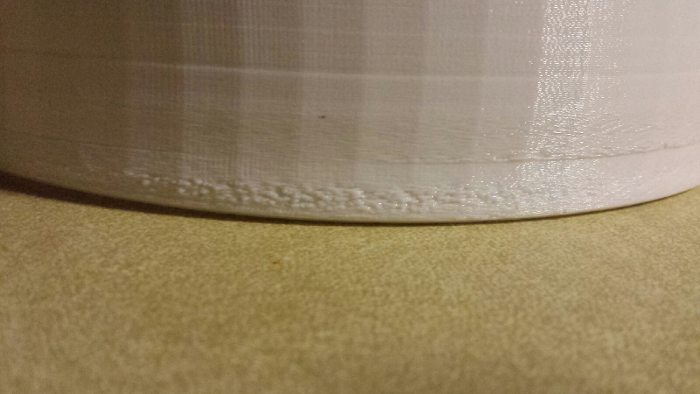
-
So, for the latest addition to my weather station, I decided to make a radiation shield to house a DHT22 temp and humidity sensor. I figured that I would also need a place to put the arduino to be used as a connection hub for everything and I figured this would be as good a place as any. This is my design for it:
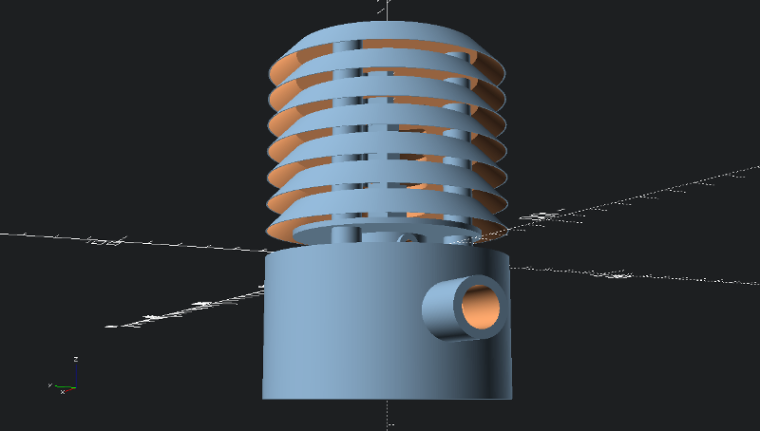
The under side of the base is where the electronics will be mounted. I have designed the standoffs to mount an easy newbie board. and should have plenty of room for wire connections as these will be fairly basic.
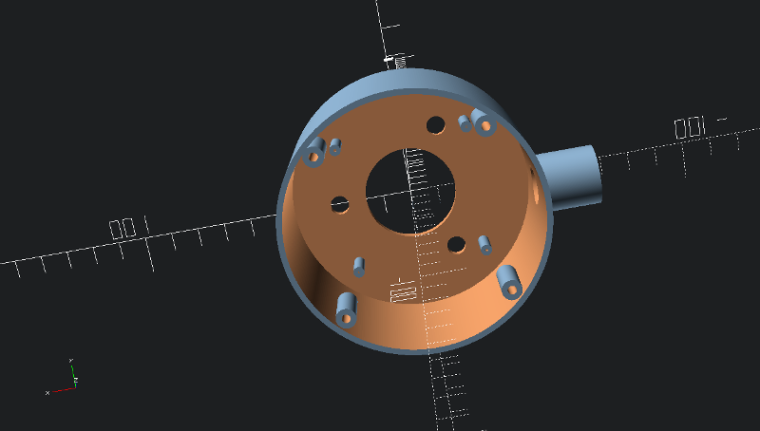
In the event that water should get inside of the unit due to wind or other factors, I have designed the bottom cover with a tapered center going to a drain hole.
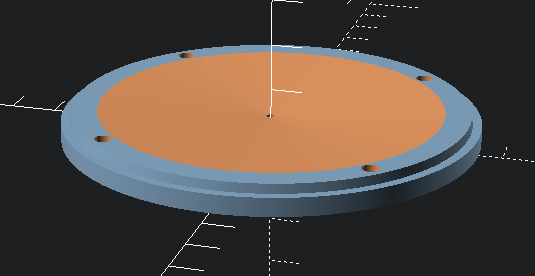
I have the radiation shield and rain gauge partially assembled for now for programming and testing. I will get some better pictures of that tomorrow and post them to the thread.
One other change that I decided on was for the wind direction sensor. Since I had a bit of trouble with the other designs that I tested using reed switches and IR phototransistors, I decided to try an AS5047P magnetic direction sensor. I ordered this one off of ebay. It was a bit expensive at $16 US plus $3.39 for shipping, but the person selling it mentioned that it comes with an extra chip. These sell on Digikey for $17 plus $7 and change for shipping, and the chips alone sell for around $9, so I didn't think it was that bad of a deal. I should have that later this week.
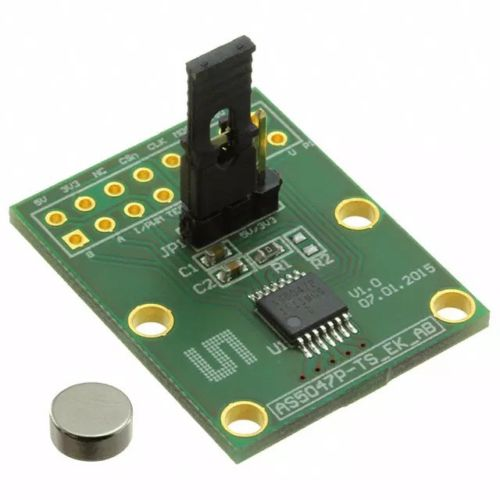
Once I get this assembled I think the last thing will be to figure out all of the programming, which I have a bit of a start on using the rain gauge code from the build section of the site. I have been researching the code for the anemometer, and that may take a bit of planning with everything else that I have running, but I think it can be done. With the new direction sensor module, that should be pretty straight forward as far as connection and code, I just need to decide if I want to connect it with SPI or straight analog. I am thinking though that this project is nearing completion. It was a bit of a learning curve building all of the parts, but I think it was a good journey.
As mentioned, I'll post more pics tomorrow.
-
looking good
I need to beef up my solar panels
I get 1 week before the low battery indicator switches on and I loose half my distance
instead of using 2x AA 1.5v batteries ( or 1.2v rechargeables )
I am just going to run 18650 cells and use a 4v solar panel
-
@MasterCATZ I had actually thought of getting a small 6 volt SLA or AGM battery and connecting a small solar panel to it. I can knock out an easy battery box with a solar panel mount on my 3D printer. These are the solar panels I was looking at as possibilities:
https://www.amazon.com/Sunnytech-333ma-Module-System-Charger/dp/B00HQXQOIQ/ref=sr_1_28?ie=UTF8&qid=1499001654&sr=8-28&keywords=6+volt+solar+panel+charger
https://www.amazon.com/Portable-Module-System-Battery-Charger/dp/B01JLPM81I/ref=sr_1_39?ie=UTF8&qid=1499001192&sr=8-39&keywords=6+volt+solar+panel+charger
I just need enough power from the panel to power the arduino and sensors during the day plus a little extra to top off the battery. I figured if I ever decide to add more sensors to the station I'll have all the power I need to handle whatever I put on it. I have my Easy Newbie board set up with a 5V pro mini and power coming into the RAW input. I think I'll be set.
-
Here are a couple pics of my first prototype mounting layout of the sensors. I may still use some elbows and get the anemometer and wind direction vane moved a bit higher than the other sensors. My fear is that with all of the sensors sitting on the same plane, wind passing by the other sensor housings may affect the readings of these. The main one I am concerned with is the rain sensor. This is a minor obstacle that can be fixed with two PVC elbows.
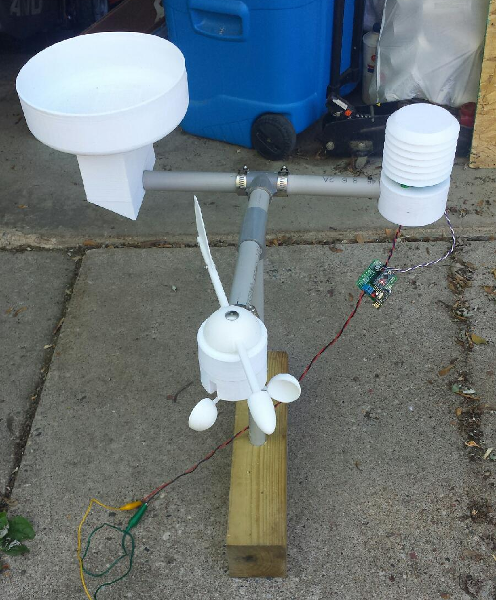
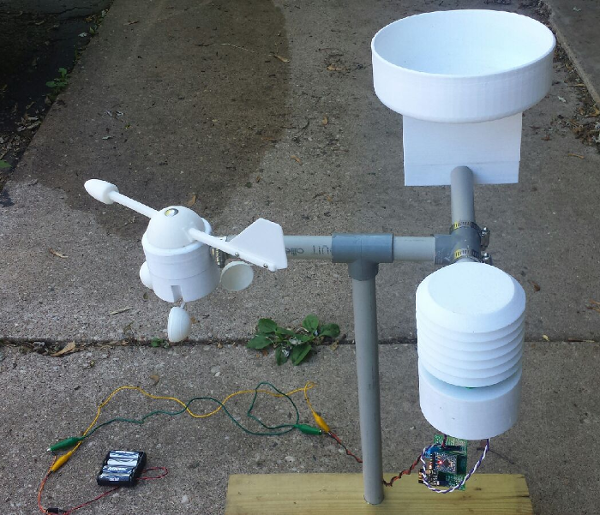
Another thing, I was thinking about the batteries that I want to use with this and I noticed that I have had the 4 - AA battery pack on for a few days now and they are still running. If I put together a pack of 2 18650 batteries, I should be good. Those batteries run at 3.7 volts, so 2 of them should give my 7.4 volts which should be no problem on the RAW input of the pro mini. My only worry with these would be overcharging them. Being that these are lithium ion batteries, they can be dangerous if overcharged. Just need to find a decent solar charging circuit for them. I am open for suggestions if anyone has any.
I hope within the next week I can have all of the OpenSCAD files cleaned up and posted on thingiverse. I wanted to post some of them a while back, but ended up making a few minor tweaks.
Enjoy...
-
So today as I was working on the rig to change the placement of the anemometer/wind direction assembly, I ended up dropping the assembly and broke one of the cups off. As I was getting ready to make a new wind cup assembly, I decided to make a small change in the design. The change that I made has the arms holding the cups lower to better prevent wind interference from the housing. Here is the new design.
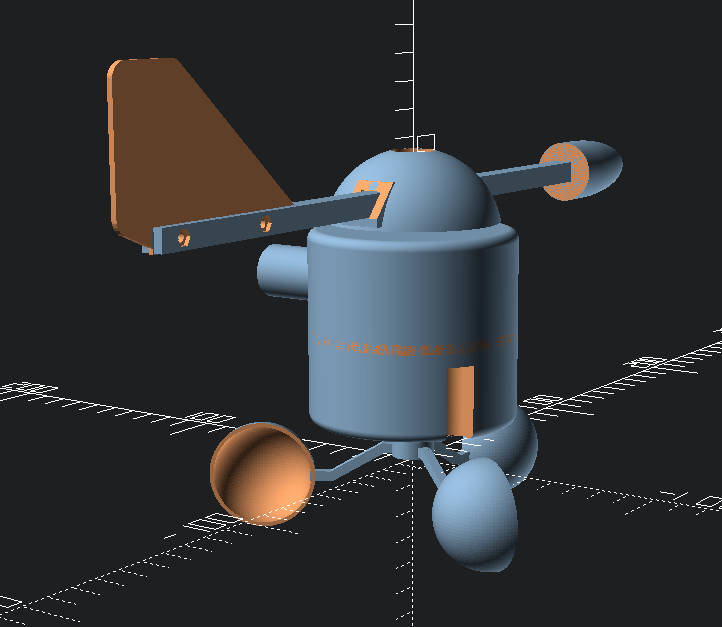
I will post more pics tomorrow of the change in placement of the anemometer assembly with the new cups.
-
You could power the pro mini directly to vcc using just one lithium cell and remove the voltage regulator and led to save power.
-
@gohan Right now the only Pro Minis that I have left in my parts bin are 5 volt ones. Besides, I already have the newbie board fitted with the 3.3v regulator and power caps. Another compelling reason for using a 5v mini is that it is 16MHz instead of 8MHz for the 3.3v ones. I think that I am going to want the extra speed for the number of sensors I have connected to a single pro mini and the data that I need to collect. I need to use interrupts for the pulse counting of the anemometer, so the faster I can do those things, the better off I'll be.
-
@dbemowsk - are your goal to sleep this sensor or whats your thoughts running it with battery? It might be a hard nut to crack 5v 16mhz and batteries?
Love your thread btw! Keep up the good work

-
@sundberg84 I don't plan to sleep the sensor at all. Putting the sensor to sleep would cause problems with the anemometer and the interrupt I need to use for that. The main reason for needing it to run on battery is that I plan to mount this up in the air on the top edge of my house. This is why I want to also put a solar panel on it. During the day the solar panel can run the sensor and charge the battery, and at night the battery can take over.
-
Are you sure you don't want to sleep sensor? If it is a matter of interrupts for anemometer, you could use a dinamic sleep time, like if you don't have any wind motion within 2 seconds put the node to sleep and wake it up on pin change
-
@gohan I have never worked with a dynamic sleep timer. Do you have am example of how this is used?
-
Not really, maybe just put the sleep in an IF statement and check if the time from last impulse from the anemometer is over than 2 sec then sleep, otherwise it just continues loop
-
@gohan So am I correct in assuming that an interrupt will wake a sleep timer? As long as I can catch the pulses from the anemometer, I don't see a reason I couldn't use a sleep timer. Just thinking about it, I may also want to use an interrupt for the rain gauge sensor for similar reasons. Not sure about the wind direction sensor.
-
Here are a few more pictures of the new layout with the new anemometer cups.
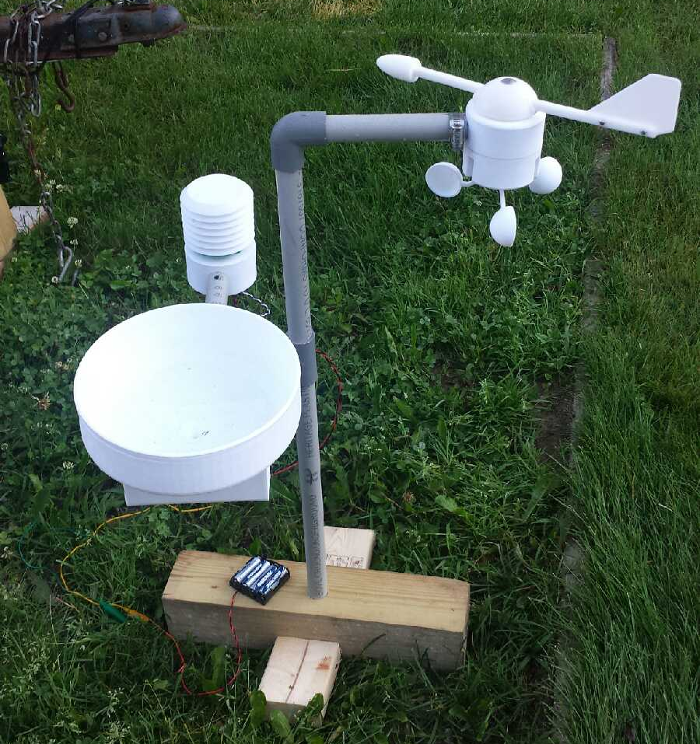
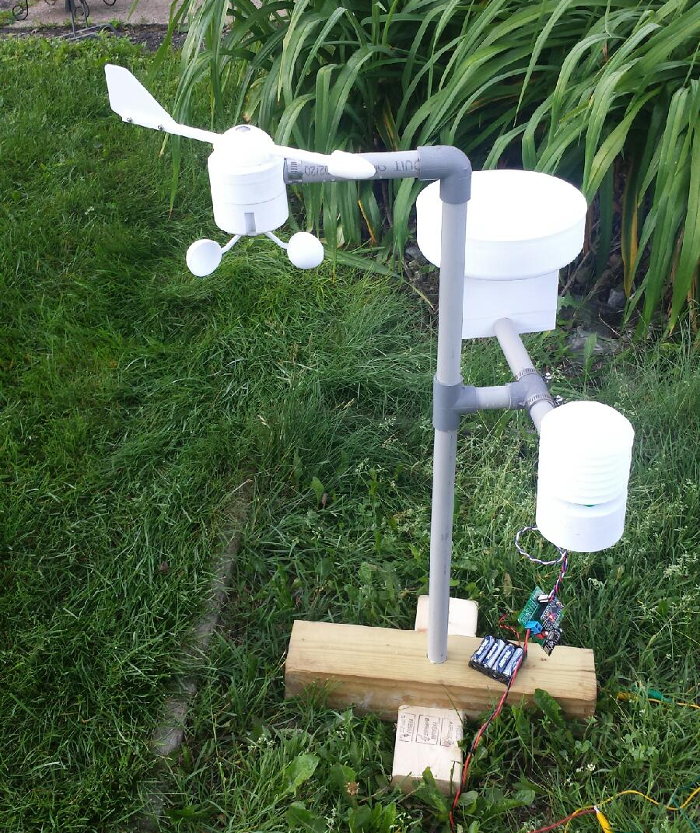
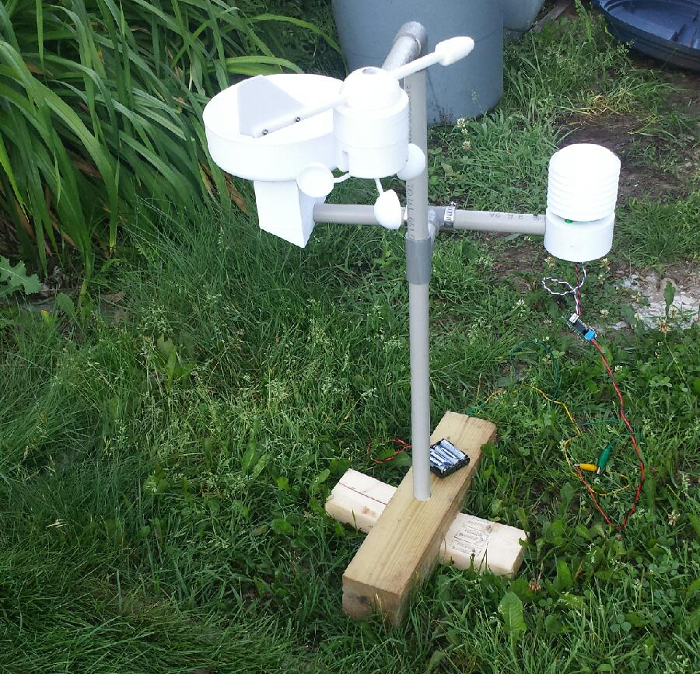
-
@dbemowsk basically you would need to attach sleep to both interrupts on pin 2 and 3 and use them for anemometer and rain meter. For wind direction check it when it wakes up
-
So I am trying to figure out code for the wind speed sensor and I see there is a V_GUST value. I am wondering what people use for that value.
-
So now that I have the wind direction sensor working, I need to try to migrate the code into my weather_station sketch. One option that I am working on implementing is a calibration button for North. So after I get things set up and mounted, I will use a compass to point the wind vane towards North. I will then press the calibration button which will save the current direction position to EEPROM if it is different than the one stored. The following code will then be used to get the true direction that the wind vane is pointing.
value = 360 * myAS5047.sensor_read() / 16383; //Read the value from the direction sensor as a value from 0 to 360 north_offset = EEPROM.read(address); //Read the offset value from EEPROM dir = ((value - north_offset) < 0) ? 360 - abs (value - north_offset) : value - north_offset; //Get the true direction /* insert code to read the button and if pressed, check the current value stored in EEPROM against the value read from the sensor and write the new value if it is different. If the sensor value matches the current stored value, then ignore the write to save on EEPROM writes. */So with this idea, I will need to know a few things. First, I am assuming that MySensors does EEPROM writes and reads. Is there a particular addreess pointer variable that I should use when writing my value to EEPROM? I will also need to know how I can get the address pointer to that data the same each time the arduino is reset, especially if MySensors does writes and reads.
As always, any input is appreciated.
-
Hello, @dbemowsk
You should use the built in method from the MySensors library to do that :
https://www.mysensors.org/download/sensor_api_20#saving-state
-
@Nca78 Thanks, exactly what I wanted to know.
-
@Nca78 So my values are from 0 to 360, looking at the link you posted, the value that you save to an address is uint8_t which is equivalent to a byte (0 to 255). Is there a way to store a word value (uint16_t), or do I need to break the value into two bytes and store those into two positions?
-
@dbemowsk said in MySensors weather station:
@Nca78 So my values are from 0 to 360, looking at the link you posted, the value that you save to an address is uint8_t which is equivalent to a byte (0 to 255). Is there a way to store a word value (uint16_t), or do I need to break the value into two bytes and store those into two positions?
Yes it can only store bytes, but it's not a big deal to make a method to read/write values on 2 bytes.
Else you can just keep a precision of 2° and divide by 2 to get a 0=>180 value
-
Actually thinking about this, I should be using 0 to 359. 0 to 360 is actually 361 positions, not 360.
-
Precision of 2° I believe it's enough as many weather stations provide just the 8 general directions
-
@gohan It would only be for saving the offset for north, so I think I will do that.
-
So I am trying to figure out the SPI for the wind direction sensor. Where is the SPI code for MySensors. Do I need to call SPI.begin()? Does MySensors code use transactions? If so, where can I find that to look at.
-
Doesn't it have a library?
-
@gohan It does, but it is an untested library. This is the test code that I ran using that library:
#include "AS5047.h" #include <SPI.h> #include <EEPROM.h> #define SWITCH_PIN 7 //The north calibration switch AS5047 myAS5047(5); // SS pin int address = 0; //EEPROM address counter int north_offset = 0; long value; int dir; bool button; void setup() { SPI.begin; Serial.begin(9600); pinMode(SWITCH_PIN, INPUT_PULLUP); north_offset = EEPROM.read(address); } void loop() { value=(360*myAS5047.sensor_read())/16383; dir = ((value - north_offset) < 0) ? 360 - abs(value - north_offset) : value - north_offset; Serial.print("measured direction: "); Serial.println(dir); Serial.print("north_offset: "); Serial.println(north_offset); button = digitalRead(SWITCH_PIN); north_offset = EEPROM.read(address); if (!button && north_offset != value) { EEPROM.write(address, value); north_offset = value; Serial.println("Button pressed"); } delay(1000); }This test worked fine, now I am trying to merge this with my weather station sketch. I am not very familiar with working with SPI. In the setup() method, they call SPI.begin(). I am just trying to figure out what I need to do for merging the code.
-
Should all of the SPI stuff be included in the library?
-
So now I have the direction sensor on the SPI bus with the CS pin connected to D5 on my easy newbie board. If I run my sample program for the direction sensor to test it on the bus with the nRF24 radio, I get readings and it seems to work fine. The problem is, if I run my modified rain sensor sketch seen below, I cannot get the radio to work.
/* Arduino Tipping Bucket Rain Gauge April 26, 2015 Version 2.0 Arduino Tipping Bucket Rain Gauge Utilizing a tipping bucket sensor, your Vera home automation controller and the MySensors.org gateway you can measure and sense local rain. This sketch will create two devices on your Vera controller. One will display your total precipitation for the last 5 days. The other, a sensor that changes state if there is recent rain (up to last 120 hours) above a threshold. Both these settings are user definable. There is a build overview video here: https://youtu.be/1eMfKQaLROo This sketch features the following: * Allows you to set the rain threshold in mm * Allows you to determine the tripped indicator window up to 120 hours. * Displays the last 5 days of rain in Variable1 through Variable5 of the Rain Sensor device * Configuration changes to Sensor device updated every hour * Should run on any Arduino * Will retain Tripped/Not Tripped status and data in a power interruption, saving small amount of data to EEPROM (Circular Buffer to maximize life of EEPROM) * LED status indicator * Optional Temp/Humidity (DHT-22 or DHT-11) and Light LUX (BH1750) sensors. To use, uncomment #define DHT_ON and/or #define LUX_ON * Optionally send total accumulation of each day's rainfall or send only individual days rainfall totals. Uncomment #define USE_DAILY to display individual daily rainfall. If it is commented out it will display a cumulative total rainfall (day4 = day1+day2+day3+day4 etc) by @BulldogLowell and @PeteWill for free public use */ #define MY_DEBUG // Enable MySensors debug prints to serial monitor // Enable and select radio type attached #define MY_RADIO_NRF24 //#define MY_RADIO_RFM69 //#define MY_NODE_ID 7 //uncomment this line to assign a static ID #include <SPI.h> #include <math.h> #include <TimeLib.h> #include "AS5047.h" #include <MySensors.h> #define SKETCH_NAME "Weather Station" #define SKETCH_VERSION "2.0" #define DWELL_TIME 40 // this allows for radio to come back to power after a transmission, ideally 0 //#define DEBUG_ON // Rain gauge specific debug messages. #define DHT_ON // uncomment out this line to enable DHT sensor //#define LUX_ON // uncomment out this line to enable BH1750 sensor //#define USE_DAILY // Uncomment to display individual daily rainfall totals in the variables sent to your controller. If it's commented it will add each day to the next for a cumulative total. #define NORTH_SWITCH_PIN 7 //The north calibration switch #define AS5047_CHIP_SELECT_PIN 5 //The north calibration switch #define TIP_SENSOR_PIN 2 //The tipping bucket rain sensor #define CALIBRATE_FACTOR 60 // amount of rain per rain bucket tip e.g. 5 is .05mm #define DHT_LUX_DELAY 300000 //Delay in milliseconds that the DHT and LUX sensors will wait before sending data #define WIND_DIR_DELAY 300000 //Delay in milliseconds that the DHT and LUX sensors will wait before sending data #define CHILD_ID_RAIN_LOG 3 // Keeps track of accumulated rainfall #define CHILD_ID_TRIPPED_INDICATOR 4 // Indicates Tripped when rain detected #define CHILD_ID_WIND 5 // Indicates Tripped when rain detected #define EEPROM_NORTH_OFFSET_LOCATION 0 // location of the EEPROM circular buffer #define EEPROM_BUFFER_LOCATION 1 // location of the EEPROM circular buffer #define E_BUFFER_LENGTH 240 #define RAIN_BUCKET_SIZE 120 #ifdef DEBUG_ON #define DEBUG_PRINT(x) Serial.print(x) #define DEBUG_PRINTLN(x) Serial.println(x) #define SERIAL_START(x) Serial.begin(x) #else #define DEBUG_PRINT(x) #define DEBUG_PRINTLN(x) #define SERIAL_START(x) #endif // MyMessage msgRainRate(CHILD_ID_RAIN_LOG, V_RAINRATE); MyMessage msgRain(CHILD_ID_RAIN_LOG, V_RAIN); // MyMessage msgRainVAR1(CHILD_ID_RAIN_LOG, V_VAR1); MyMessage msgRainVAR2(CHILD_ID_RAIN_LOG, V_VAR2); MyMessage msgRainVAR3(CHILD_ID_RAIN_LOG, V_VAR3); MyMessage msgRainVAR4(CHILD_ID_RAIN_LOG, V_VAR4); MyMessage msgRainVAR5(CHILD_ID_RAIN_LOG, V_VAR5); // MyMessage msgTripped(CHILD_ID_TRIPPED_INDICATOR, V_TRIPPED); MyMessage msgTrippedVar1(CHILD_ID_TRIPPED_INDICATOR, V_VAR1); MyMessage msgTrippedVar2(CHILD_ID_TRIPPED_INDICATOR, V_VAR2); MyMessage msgWindSpeed(CHILD_ID_WIND, V_WIND); MyMessage msgWindGust(CHILD_ID_WIND, V_GUST); MyMessage msgWindDirection(CHILD_ID_WIND, V_DIRECTION); // #ifdef DHT_ON #include <DHT.h> #define CHILD_ID_HUM 0 #define CHILD_ID_TEMP 1 #define HUMIDITY_SENSOR_DIGITAL_PIN 3 DHT dht; float lastTemp; float lastHum; bool metric = false; MyMessage msgHum(CHILD_ID_HUM, V_HUM); MyMessage msgTemp(CHILD_ID_TEMP, V_TEMP); #endif // #ifdef LUX_ON //BH1750 is connected to SCL (analog input A5) and SDA (analog input A4) #include <BH1750.h> #include <Wire.h> #define CHILD_ID_LIGHT 2 BH1750 lightSensor; MyMessage msg(CHILD_ID_LIGHT, V_LIGHT_LEVEL); unsigned int lastlux; uint8_t heartbeat = 10; //Used to send the light lux to gateway as soon as the device is restarted and after the DHT_LUX_DELAY has happened 10 times #endif AS5047 myAS5047(5); //AS5047_CHIP_SELECT_PIN); //Wind direction magnetic position sensor uint8_t north_offset; bool button; int wind_direction; int last_direction; unsigned long sensorPreviousMillis; unsigned long windDirPreviousMillis; int eepromIndex; int tipSensorPin = 3; // Pin the tipping bucket is connected to. Must be interrupt capable pin int ledPin = 5; // Pin the LED is connected to. PWM capable pin required #ifdef DEBUG_ON unsigned long dataMillis; unsigned long serialInterval = 600000UL; #endif const unsigned long oneHour = 3600000UL; unsigned long lastTipTime; unsigned long lastRainTime; //Used for rainRate calculation unsigned int rainBucket [RAIN_BUCKET_SIZE] ; /* 24 hours x 5 Days = 120 hours */ unsigned int rainRate = 0; uint8_t rainWindow = 72; //default rain window in hours. Will be overwritten with msgTrippedVar1. volatile int wasTippedBuffer = 0; int rainSensorThreshold = 50; //default rain sensor sensitivity in hundredths. Will be overwritten with msgTrippedVar2. uint8_t state = 0; uint8_t oldState = 2; //Setting the default to something other than 1 or 0 unsigned int lastRainRate = 0; int lastMeasure = 0; bool gotTime = false; uint8_t lastHour; uint8_t currentHour; // void presentation() { // Register all sensors to gw (they will be created as child devices) sendSketchInfo(SKETCH_NAME, SKETCH_VERSION); wait(DWELL_TIME); present(CHILD_ID_RAIN_LOG, S_RAIN); wait(DWELL_TIME); present(CHILD_ID_TRIPPED_INDICATOR, S_MOTION); wait(DWELL_TIME); present(CHILD_ID_WIND, S_WIND); wait(DWELL_TIME); #ifdef DHT_ON present(CHILD_ID_HUM, S_HUM); wait(DWELL_TIME); present(CHILD_ID_TEMP, S_TEMP); wait(DWELL_TIME); #endif #ifdef LUX_ON present(CHILD_ID_LIGHT, S_LIGHT_LEVEL); #endif DEBUG_PRINTLN(F("Sensor Presentation Complete")); } void setup() { #ifndef MY_DEBUG SERIAL_START(115200); //Start serial if MySensors debugging isn't enabled #endif // pinMode(NORTH_SWITCH_PIN, INPUT_PULLUP); // Set up the IO pinMode(TIP_SENSOR_PIN, INPUT_PULLUP); attachInterrupt (digitalPinToInterrupt(TIP_SENSOR_PIN), sensorTipped, FALLING); // depending on location of the hall effect sensor may need CHANGE pinMode(ledPin, OUTPUT); digitalWrite(ledPin, HIGH); // //Sync time with the server // unsigned long functionTimeout = millis(); while (timeStatus() == timeNotSet && millis() - functionTimeout < 30000UL) { requestTime(); DEBUG_PRINTLN(F("Getting Time")); wait(1000); // call once per second DEBUG_PRINTLN(F(".")); } currentHour = hour(); lastHour = hour(); // //retrieve from EEPROM stored values on a power cycle. // //Get the north offset direction north_offset = loadState(EEPROM_NORTH_OFFSET_LOCATION)*2; bool isDataOnEeprom = false; for (int i = 0; i < E_BUFFER_LENGTH; i++) { uint8_t locator = loadState(EEPROM_BUFFER_LOCATION + i); if (locator == 0xFE) // found the EEPROM circular buffer index { eepromIndex = EEPROM_BUFFER_LOCATION + i; DEBUG_PRINT(F("EEPROM Index ")); DEBUG_PRINTLN(eepromIndex); //Now that we have the buffer index let's populate the rainBucket[] with data from eeprom loadRainArray(eepromIndex); isDataOnEeprom = true; break; } } // if (!isDataOnEeprom) // Added for the first time it is run on a new Arduino { DEBUG_PRINTLN(F("I didn't find valid EEPROM Index, so I'm writing one to location 0")); eepromIndex = EEPROM_BUFFER_LOCATION; saveState(eepromIndex, 0xFE); saveState(eepromIndex + 1, 0xFE); //then I will clear out any bad data for (int i = 2; i <= E_BUFFER_LENGTH; i++) { saveState(i, 0x00); } } #ifdef DEBUG_ON dataMillis = millis(); #endif lastTipTime = millis(); // request(CHILD_ID_TRIPPED_INDICATOR, V_VAR1); wait(DWELL_TIME); request(CHILD_ID_TRIPPED_INDICATOR, V_VAR2); wait(DWELL_TIME); // #ifdef DHT_ON dht.setup(HUMIDITY_SENSOR_DIGITAL_PIN); metric = getConfig().isMetric; //metric = false; wait(DWELL_TIME); #endif // #ifdef LUX_ON lightSensor.begin(); #endif // transmitRainData(); //Setup complete send any data loaded from eeprom to gateway } void loop() { if (state) { prettyFade(); // breathe if tripped } else { slowFlash(); // blink if not tripped } #ifdef DEBUG_ON // Serial Debug Block if ( (millis() - dataMillis) >= serialInterval) { for (int i = 24; i <= 120; i = i + 24) { updateSerialData(i); } dataMillis = millis(); } #endif //NORTH_SWITCH_PIN button = digitalRead(NORTH_SWITCH_PIN); if (!button) { setNorthOffset(); } // // let's constantly check to see if the rain in the past rainWindow hours is greater than rainSensorThreshold // int measure = 0; // Check to see if we need to show sensor tripped in this block for (int i = 0; i < rainWindow; i++) { measure += rainBucket [i]; if (measure != lastMeasure) { // DEBUG_PRINT(F("measure value (total rainBucket within rainWindow): ")); // DEBUG_PRINTLN(measure); lastMeasure = measure; } } // state = (measure >= (rainSensorThreshold * 100)); if (state != oldState) { send(msgTripped.set(state)); wait(DWELL_TIME); DEBUG_PRINT(F("New Sensor State... Sensor: ")); DEBUG_PRINTLN(state ? "Tripped" : "Not Tripped"); oldState = state; } //WIND_DIR_DELAY if (millis() - windDirPreviousMillis > WIND_DIR_DELAY) { wind_direction = getWindDirection(); if (wind_direction != last_direction) { send(msgWindDirection.set(wind_direction)); } last_direction = wind_direction; windDirPreviousMillis = millis(); } // unsigned long tipDelay = millis() - lastRainTime; if (wasTippedBuffer) // if was tipped, then update the 24hour total and transmit to Vera { DEBUG_PRINTLN(F("Sensor Tipped")); DEBUG_PRINT(F("rainBucket [0] value: ")); DEBUG_PRINTLN(rainBucket [0]); send(msgRain.set((float)rainTotal(currentHour) / 100, 1)); //Calculate the total rain for the day wait(DWELL_TIME); wasTippedBuffer--; rainRate = ((oneHour) / tipDelay); if (rainRate != lastRainRate) { send(msgRainRate.set(rainRate, 1)); wait(DWELL_TIME); DEBUG_PRINT(F("RainRate= ")); DEBUG_PRINTLN(rainRate); lastRainRate = rainRate; } lastRainTime = lastTipTime; } // currentHour = hour(); if (currentHour != lastHour) { DEBUG_PRINTLN(F("One hour elapsed.")); send(msgRain.set((float)rainTotal(currentHour) / 100, 1)); // send today's rainfall wait(DWELL_TIME); saveState(eepromIndex, highByte(rainBucket[0])); saveState(eepromIndex + 1, lowByte(rainBucket[0])); DEBUG_PRINT(F("Saving rainBucket[0] to eeprom. rainBucket[0] = ")); DEBUG_PRINTLN(rainBucket[0]); for (int i = RAIN_BUCKET_SIZE - 1; i >= 0; i--)//cascade an hour of values back into the array { rainBucket [i + 1] = rainBucket [i]; } request(CHILD_ID_TRIPPED_INDICATOR, V_VAR1); wait(DWELL_TIME); request(CHILD_ID_TRIPPED_INDICATOR, V_VAR2); wait(DWELL_TIME); rainBucket[0] = 0; eepromIndex = eepromIndex + 2; if (eepromIndex > EEPROM_BUFFER_LOCATION + E_BUFFER_LENGTH) { eepromIndex = EEPROM_BUFFER_LOCATION; } DEBUG_PRINT(F("Writing to EEPROM. Index: ")); DEBUG_PRINTLN(eepromIndex); saveState(eepromIndex, 0xFE); saveState(eepromIndex + 1, 0xFE); requestTime(); // sync the time every hour wait(DWELL_TIME); transmitRainData(); rainRate = 0; send(msgRainRate.set(rainRate, 1)); wait(DWELL_TIME); DEBUG_PRINTLN(F("Sending rainRate is 0 to controller")); lastHour = hour(); } if (millis() - sensorPreviousMillis > DHT_LUX_DELAY) { #ifdef DHT_ON //DHT Code doDHT(); #endif #ifdef LUX_ON doLUX(); #endif sensorPreviousMillis = millis(); } } int getWindDirection() { north_offset = loadState(EEPROM_NORTH_OFFSET_LOCATION); int value = readDir(); int dir = ((value - north_offset) < 0) ? 360 - abs(value - north_offset) : value - north_offset; DEBUG_PRINT("Wind direction: "); DEBUG_PRINTLN(dir); return dir; } // void setNorthOffset() { int value = readDir(); if (north_offset != value) { saveState(EEPROM_NORTH_OFFSET_LOCATION, value/2); north_offset = value; DEBUG_PRINT("North offset set to: "); DEBUG_PRINTLN(value/2); } } int readDir() { int value = (359*myAS5047.sensor_read())/16383; return value; } // #ifdef DHT_ON void doDHT(void) { float temperature = dht.getTemperature(); if (isnan(temperature)) { DEBUG_PRINTLN(F("Failed reading temperature from DHT")); } else if (temperature != lastTemp) { lastTemp = temperature; if (!metric) { temperature = dht.toFahrenheit(temperature); } send(msgTemp.set(temperature, 1)); wait(DWELL_TIME); DEBUG_PRINT(F("Temperature is: ")); DEBUG_PRINTLN(temperature); } float humidity = dht.getHumidity();; if (isnan(humidity)) { DEBUG_PRINTLN(F("Failed reading humidity from DHT")); } else if (humidity != lastHum) { lastHum = humidity; send(msgHum.set(humidity, 1)); wait(DWELL_TIME); DEBUG_PRINT(F("Humidity is: ")); DEBUG_PRINTLN(humidity); } } #endif // #ifdef LUX_ON void doLUX(void) { unsigned int lux = lightSensor.readLightLevel();// Get Lux value DEBUG_PRINT(F("Current LUX Level: ")); DEBUG_PRINTLN(lux); heartbeat++; if (lux != lastlux || heartbeat > 10) { send(msg.set(lux)); lastlux = lux; } if (heartbeat > 10) { heartbeat = 0; } } #endif // void sensorTipped() { unsigned long thisTipTime = millis(); if (thisTipTime - lastTipTime > 100UL) { rainBucket[0] += CALIBRATE_FACTOR; // adds CALIBRATE_FACTOR hundredths of unit each tip wasTippedBuffer++; } lastTipTime = thisTipTime; } // int rainTotal(int hours) { int total = 0; for ( int i = 0; i <= hours; i++) { total += rainBucket [i]; } return total; } #ifdef DEBUG_ON void updateSerialData(int x) { DEBUG_PRINT(F("Rain last ")); DEBUG_PRINT(x); DEBUG_PRINTLN(F(" hours: ")); float tipCount = 0; for (int i = 0; i < x; i++) { tipCount = tipCount + rainBucket [i]; } tipCount = tipCount / 100; DEBUG_PRINTLN(tipCount); } #endif void loadRainArray(int eValue) // retrieve stored rain array from EEPROM on powerup { for (int i = 1; i < RAIN_BUCKET_SIZE; i++) { eValue = eValue - 2; if (eValue < EEPROM_BUFFER_LOCATION) { eValue = EEPROM_BUFFER_LOCATION + E_BUFFER_LENGTH; } DEBUG_PRINT(F("EEPROM location: ")); DEBUG_PRINTLN(eValue); uint8_t rainValueHigh = loadState(eValue); uint8_t rainValueLow = loadState(eValue + 1); unsigned int rainValue = rainValueHigh << 8; rainValue |= rainValueLow; rainBucket[i] = rainValue; // DEBUG_PRINT(F("rainBucket[ value: ")); DEBUG_PRINT(i); DEBUG_PRINT(F("] value: ")); DEBUG_PRINTLN(rainBucket[i]); } } void transmitRainData(void) { DEBUG_PRINT(F("In transmitRainData. currentHour = ")); DEBUG_PRINTLN(currentHour); int rainUpdateTotal = 0; for (int i = currentHour; i >= 0; i--) { rainUpdateTotal += rainBucket[i]; DEBUG_PRINT(F("Adding rainBucket[")); DEBUG_PRINT(i); DEBUG_PRINTLN(F("] to rainUpdateTotal.")); } DEBUG_PRINT(F("TX Day 1: rainUpdateTotal = ")); DEBUG_PRINTLN((float)rainUpdateTotal / 100.0); send(msgRainVAR1.set((float)rainUpdateTotal / 100.0, 1)); //Send current day rain totals (resets at midnight) wait(DWELL_TIME); #ifdef USE_DAILY rainUpdateTotal = 0; #endif for (int i = currentHour + 24; i > currentHour; i--) { rainUpdateTotal += rainBucket[i]; DEBUG_PRINT(F("Adding rainBucket[")); DEBUG_PRINT(i); DEBUG_PRINTLN(F("] to rainUpdateTotal.")); } DEBUG_PRINT(F("TX Day 2: rainUpdateTotal = ")); DEBUG_PRINTLN((float)rainUpdateTotal / 100.0); send(msgRainVAR2.set((float)rainUpdateTotal / 100.0, 1)); wait(DWELL_TIME); #ifdef USE_DAILY rainUpdateTotal = 0; #endif for (int i = currentHour + 48; i > currentHour + 24; i--) { rainUpdateTotal += rainBucket[i]; DEBUG_PRINT(F("Adding rainBucket[")); DEBUG_PRINT(i); DEBUG_PRINTLN(F("] to rainUpdateTotal.")); } DEBUG_PRINT(F("TX Day 3: rainUpdateTotal = ")); DEBUG_PRINTLN((float)rainUpdateTotal / 100.0); send(msgRainVAR3.set((float)rainUpdateTotal / 100.0, 1)); wait(DWELL_TIME); #ifdef USE_DAILY rainUpdateTotal = 0; #endif for (int i = currentHour + 72; i > currentHour + 48; i--) { rainUpdateTotal += rainBucket[i]; DEBUG_PRINT(F("Adding rainBucket[")); DEBUG_PRINT(i); DEBUG_PRINTLN(F("] to rainUpdateTotal.")); } DEBUG_PRINT(F("TX Day 4: rainUpdateTotal = ")); DEBUG_PRINTLN((float)rainUpdateTotal / 100.0); send(msgRainVAR4.set((float)rainUpdateTotal / 100.0, 1)); wait(DWELL_TIME); #ifdef USE_DAILY rainUpdateTotal = 0; #endif for (int i = currentHour + 96; i > currentHour + 72; i--) { rainUpdateTotal += rainBucket[i]; DEBUG_PRINT(F("Adding rainBucket[")); DEBUG_PRINT(i); DEBUG_PRINTLN(F("] to rainUpdateTotal.")); } DEBUG_PRINT(F("TX Day 5: rainUpdateTotal = ")); DEBUG_PRINTLN((float)rainUpdateTotal / 100.0); send(msgRainVAR5.set((float)rainUpdateTotal / 100.0, 1)); wait(DWELL_TIME); } void receive(const MyMessage &message) { if (message.sensor == CHILD_ID_RAIN_LOG) { // nothing to do here } else if (message.sensor == CHILD_ID_TRIPPED_INDICATOR) { if (message.type == V_VAR1) { rainWindow = atoi(message.data); if (rainWindow > 120) { rainWindow = 120; } else if (rainWindow < 1) { rainWindow = 1; } if (rainWindow != atoi(message.data)) // if I changed the value back inside the boundries, push that number back to Vera { send(msgTrippedVar1.set(rainWindow)); } } else if (message.type == V_VAR2) { rainSensorThreshold = atoi(message.data); if (rainSensorThreshold > 10000) { rainSensorThreshold = 10000; } else if (rainSensorThreshold < 1) { rainSensorThreshold = 1; } if (rainSensorThreshold != atoi(message.data)) // if I changed the value back inside the boundries, push that number back to Vera { send(msgTrippedVar2.set(rainSensorThreshold)); } } } } void prettyFade(void) { float val = (exp(sin(millis() / 2000.0 * PI)) - 0.36787944) * 108.0; analogWrite(ledPin, val); } void slowFlash(void) { static bool ledState = true; static unsigned long pulseStart = millis(); if (millis() - pulseStart < 100UL) { digitalWrite(ledPin, !ledState); pulseStart = millis(); } } void receiveTime(unsigned long newTime) { DEBUG_PRINTLN(F("Time received...")); setTime(newTime); char theTime[6]; sprintf(theTime, "%d:%2d", hour(), minute()); DEBUG_PRINTLN(theTime); }These are the errors that I get when I try to run the code:
Starting sensor (RNNNA-, 2.0.0) TSM:INIT !TSM:RADIO:FAIL !TSM:FAILURE TSM:PDTIf I disconnect the direction sensor and start it, the radio works fine. The odd thing is that when I run the test code for the direction sensor with the radio connected to the bus, that works fine.
Any ideas?
-
@dbemowsk my guess is your sensor tries to communicate on the SPI bus and prevents communication with NRF24.
I don't know what is in you AS5047 files so I'm not sure but I suppose it's taking over the SPI bus at creation, you should try to force the CSN pin used for the as5047 to HIGH in before() method to disable it before MySensors library starts using the radio.
-
@Nca78 ok, so I tried adding this:
void before() { digitalWrite(AS5047_CHIP_SELECT_PIN, HIGH); }This seems to now allow the radio to connect, but I am still having some trouble. I then tried removing setting the CSN pin high in the before(), and adding it to the constructor of the library class here:
AS5047::AS5047(uint16_t SelectPin) : _ss(SelectPin) { pinMode(_ss, OUTPUT); SPCR = (1<<SPE) | (1<<MSTR) | (1<<CPHA) | (1<<SPR1) | (1<<SPR0); // slow down clock speed, set up spi digitalWrite(_ss, HIGH); //<<------------- SPI.begin(); }This seemed to do the same as putting it in the begin() method, but still having some trouble. I am going to see if I can work through the problems on my own, but I may post if I have questions. Let me know if you see problems with what I did to the class.
Thanks.
-
@dbemowsk it's good practice to have a pull up resistor on each SPI CS line (approx. 10k).
It can save you a lot of hassle when multiple devices share the same SPI bus.
-
@Yveaux Thanks, this is easy enough. I have some small 1/8w 10k resistors with a small bit of room in the proto area of the easy newbie board yet, I will add one in.
-
-
@Yveaux I thought the nRF24 radios would have had it built in to the module, but I never checked. It is just that and the magnetic direction sensor on the SPI bus. After thinking about it too, I may just add the resistor on to the small board I have inside the wind speed and direction sensor case that the wire harness connects to, or do you think it would be better if it was closer to the arduino? If that is the case, then I would stick with my original plan to put it in the little bit of leftover space in the proto area of the easy newbie board. Jumper wires are getting a bit cramped in that space though, so if I can avoid it I will.
-
@dbemowsk the nrf module doesn't have a pullup on CS.
Where you put them doesn't really matter. It's just to have a defined, unselected state when the lines are not actively driven by the microcontroller.
If it is too much trouble in your current hardware, then skip the pull-ups and save them for your next piece of hardware. The same can be achieved in software, but you just must make sure all CS lines are made inactive (high) before doing anything with the SPI bus. Before() is a good place to achieve this, but bad designed drivers that use eg the constructor to do spi initialization could still beat you to it...
Therefore pull-ups are preferred.
-
@Yveaux If I am going to do one for the radio too, I can put one in the case of the wind sensor and one in the proto area for the radio. I think I'll be alright. It will eliminate confusion on the programming end.
-
@Yveaux So if this is done in software, is it better to be done in the before() method rather than the constructor of the library class? If the nRF24 radios do not have a built in pull up on the CS line, does the MySensors library somehow take care of this in one of it's class files? I haven't seen a push to have designers of MySensors hardware include pull-ups on the nRF24's CS line...
-
@dbemowsk said in MySensors weather station:
@Yveaux So if this is done in software, is it better to be done in the before() method rather than the constructor of the library class?
It all depends on initialization order of the classes, which isn't trivial. For global static instances (declared outside a function like loop()) the constructor will be called before the before() call, but if one places an instance inside a function or dynamically creates it things will be different. So, when designing a library you simply can't be sure when your constructie is called...
I'm not sure right now if the drivers actively pull the CS line high at startup, but IMHO they should.
The fact that some mySensors hardware designs lack pull-ups on CS is probably because the SPI bus isn't shared in many cases, and maybe because people aren't aware.
This would be a good item to add to a design checklist, if only we had one
-
@Yveaux Great explanation, thanks.
I am close to having things all working. I will post more as I progress.
-
OK, so here is my easy newbie board layout showing pin connections and header plug identifications. I am still working on the code a bit. I still need to work in the wind speed and wind gust code and figure out the calculations for that. I am nearing the point of full sensor testing. I will then need to figure out my power situation.
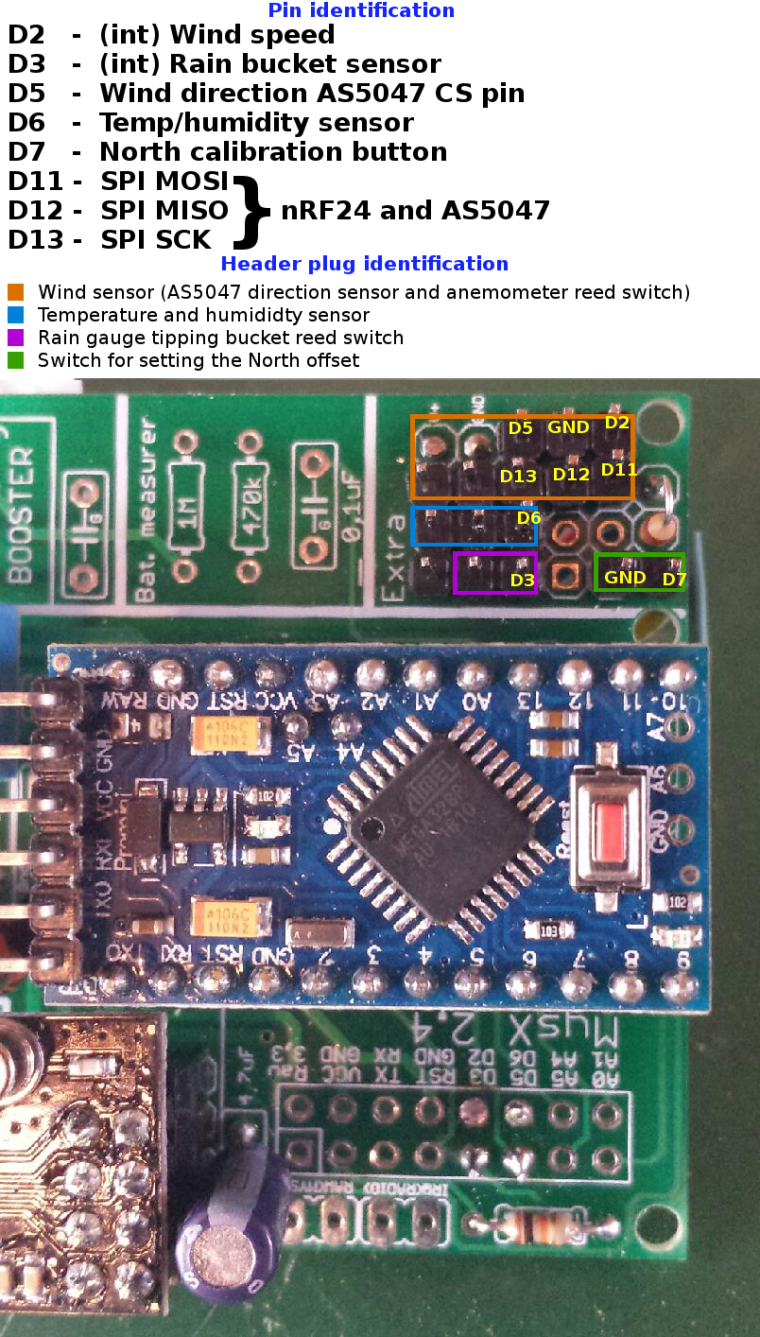
-
Here are some of the final pics of the wind sensor assembly. The first one shows the circuit board mounting assembly. I have a small channel on the top and bottom sides of the mounting plate to hold rubber O-ring seals to keep water out. The seals can be seen to the left of the image.

Next is just a wide angle shot of all the parts. The connector for the anemometer reed switch feeds through the hole next to the wire harness board and plugs into a header on that board.

The last pic is the fully assembled unit with the wire harness attached. I added a shot of the O-rings sandwiched between the layers to keep water out.
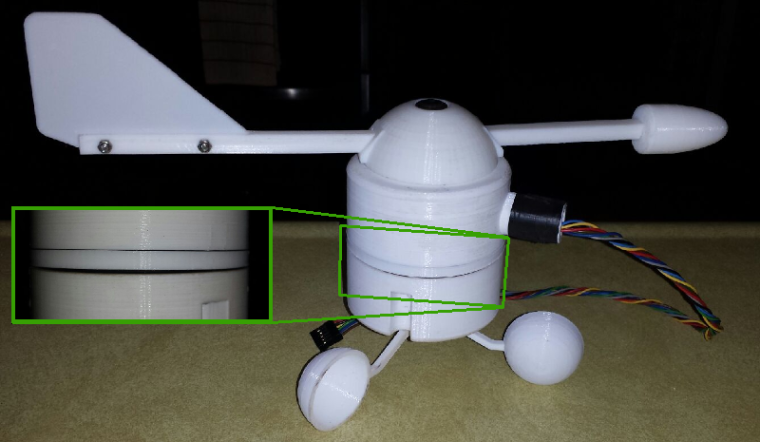
-
@dbemowsk great work, thanks for sharing!
My 3D printer does not create watertight prints. Water seems to be able to slowly pass through the walls. Hopefully your printer is better, but it might be something to look out for.
-
@mfalkvidd The walls of the upper and lower case are pretty thick. I used 100% infill which was probably a bit overboard, but I didn't want any water in it. That is why I also put the rubber O-rings in the middle. With the sides compressing that rubber it gives it a pretty good seal. I was originally going to make gaskets. but I found the O-rings to be a better fit.
-
So for those that have wind sensors on your setups, what are you using for your V_GUST value that you send back to the controller?
-
@dbemowsk said in MySensors weather station:
what are you using for your V_GUST value that you send back to the controller?
I send a new value every minute. The sensor measures continuously and the wind speed reported is the average speed over this minute. Gust is simply the maximum speed in a minute.
-
This is the official (US)National Weather Service definition of wind gust. It looks like they dont report gusts until wind speed is above a certain amount. I like to overcomplicate things, so I would report the average, max in a minute (like Yveaux), and a standard deviation(just to be fancy)
https://graphical.weather.gov/definitions/defineWindGust.html
-
Thanks to you both, just what I needed.
-
How often do people transmit their wind speed to the controller.
-
really looking good

-
@tombstone thanks.
Trying to run some tests today. I think I have some workable code, but I don't have any sleep figured in yet. With all of the sensors being run from one pro mini, there is a lot going on and I will need to figure sleep in carefully if I even do. I have temp, humidity, rain, wind direction and wind speed. Arduino IDE says that it takes 75% of the program memory and that is not with debugging on. If I turn that on I start to get warnings, but it will compile and run.
Getting even closer to being able to mount this on my roof.
-
So I am running into a problem with the code I am working on. Specifically the wind direction sensor. When I reset the node, the first loop of the main loop, it gets the wind direction fine, but gets an incorrect reading every time after regardless of where I position the sensor. Here is a snippet of the debug output:
Sensor Presentation Complete New Sensor State... Sensor: Not Tripped ................................... Anemometer speed in Hz 0.00 Current wind speed is 0 Current average wind speed is 0.00 ................................... Wind position: 231 Wind direction: 52 ----------------------------------- Temperature is: 74.84 =================================== Humidity is: 53.20 ................................... Anemometer speed in Hz 0.00 Current wind speed is 0 Current average wind speed is 0.00 =================================== Humidity is: 53.50 ................................... Anemometer speed in Hz 0.00 Current wind speed is 0 Current average wind speed is 0.00 ................................... Wind position: 179 Wind direction: 0 ................................... Anemometer speed in Hz 0.00 Current wind speed is 0 Current average wind speed is 0.00 ................................... Anemometer speed in Hz 0.00 Current wind speed is 0 Current average wind speed is 0.00 ................................... Anemometer speed in Hz 0.00 Current wind speed is 0 Current average wind speed is 0.00 ................................... Wind position: 179 Wind direction: 0 ................................... Anemometer speed in Hz 0.00 Current wind speed is 0 Current average wind speed is 0.00As you can see, the initial reading shows the following:
Wind position: 231 Wind direction: 52After that, every reading shows:
Wind position: 179 Wind direction: 0All sensor readings are getting transmitted back to my Vera controller fine. Here is the full sketch for the node:
/* Arduino Tipping Bucket Rain Gauge April 26, 2015 Version 2.0 Arduino Tipping Bucket Rain Gauge Utilizing a tipping bucket sensor, your Vera home automation controller and the MySensors.org gateway you can measure and sense local rain. This sketch will create two devices on your Vera controller. One will display your total precipitation for the last 5 days. The other, a sensor that changes state if there is recent rain (up to last 120 hours) above a threshold. Both these settings are user definable. There is a build overview video here: https://youtu.be/1eMfKQaLROo This sketch features the following: * Allows you to set the rain threshold in mm * Allows you to determine the tripped indicator window up to 120 hours. * Displays the last 5 days of rain in Variable1 through Variable5 of the Rain Sensor device * Configuration changes to Sensor device updated every hour * Should run on any Arduino * Will retain Tripped/Not Tripped status and data in a power interruption, saving small amount of data to EEPROM (Circular Buffer to maximize life of EEPROM) * LED status indicator * Optional Temp/Humidity (DHT-22 or DHT-11) and Light LUX (BH1750) sensors. To use, uncomment #define DHT_ON and/or #define LUX_ON * Optionally send total accumulation of each day's rainfall or send only individual days rainfall totals. Uncomment #define USE_DAILY to display individual daily rainfall. If it is commented out it will display a cumulative total rainfall (day4 = day1+day2+day3+day4 etc) by @BulldogLowell and @PeteWill for free public use */ //#define MY_DEBUG // Enable MySensors debug prints to serial monitor // Enable and select radio type attached #define MY_RADIO_NRF24 //#define MY_RADIO_RFM69 //#define MY_NODE_ID 7 //uncomment this line to assign a static ID #include "AS5047.h" #include <SPI.h> #include <math.h> #include <TimeLib.h> #include <MySensors.h> #define SKETCH_NAME "Weather Station" #define SKETCH_VERSION "2.0" #define DWELL_TIME 40 // this allows for radio to come back to power after a transmission, ideally 0 #define DEBUG_ON // Rain gauge specific debug messages. #define RAIN_ON // uncomment out this line to enable the rain sensor #define DHT_ON // uncomment out this line to enable DHT sensor //#define LUX_ON // uncomment out this line to enable BH1750 sensor #define ANEMOMETER_ON // uncomment out this line to enable anemometer sensor #define AS5047_ON // uncomment out this line to enable AS5047 wind direction sensor #define USE_DAILY // Uncomment to display individual daily rainfall totals in the variables sent to your controller. If it's commented it will add each day to the next for a cumulative total. #define NORTH_SWITCH_PIN 7 //The north calibration switch #define AS5047_CHIP_SELECT_PIN 5 //The north calibration switch #define ANEMOMETER_PIN 2 //The wind speed sensor #define TIP_SENSOR_PIN 3 //The tipping bucket rain sensor #define CALIBRATE_FACTOR 60 // amount of rain per rain bucket tip e.g. 5 is .05mm #define DHT_LUX_DELAY 3000 //Delay in milliseconds that the DHT and LUX sensors will wait before sending data #define WIND_DIR_DELAY 5000 //Delay in milliseconds that the wind direction sensor will wait before sending data #define NORTH_OFFSET_BUTTON_DELAY 5000 //Delay in milliseconds that the DHT and LUX sensors will wait before sending data #define CHILD_ID_RAIN_LOG 3 // Keeps track of accumulated rainfall #define CHILD_ID_TRIPPED_INDICATOR 4 // Indicates Tripped when rain detected #define CHILD_ID_WIND 5 // Indicates Tripped when rain detected #define EEPROM_NORTH_OFFSET_LOCATION 0 // location of the EEPROM circular buffer #define EEPROM_BUFFER_LOCATION 2 // location of the EEPROM circular buffer #define E_BUFFER_LENGTH 240 #define RAIN_BUCKET_SIZE 120 #ifdef DEBUG_ON #define DEBUG_PRINT(x) Serial.print(x) #define DEBUG_PRINTLN(x) Serial.println(x) #define SERIAL_START(x) Serial.begin(x) #else #define DEBUG_PRINT(x) #define DEBUG_PRINTLN(x) #define SERIAL_START(x) #endif // MyMessage msgRainRate(CHILD_ID_RAIN_LOG, V_RAINRATE); MyMessage msgRain(CHILD_ID_RAIN_LOG, V_RAIN); // MyMessage msgRainVAR1(CHILD_ID_RAIN_LOG, V_VAR1); MyMessage msgRainVAR2(CHILD_ID_RAIN_LOG, V_VAR2); MyMessage msgRainVAR3(CHILD_ID_RAIN_LOG, V_VAR3); MyMessage msgRainVAR4(CHILD_ID_RAIN_LOG, V_VAR4); MyMessage msgRainVAR5(CHILD_ID_RAIN_LOG, V_VAR5); // MyMessage msgTripped(CHILD_ID_TRIPPED_INDICATOR, V_TRIPPED); MyMessage msgTrippedVar1(CHILD_ID_TRIPPED_INDICATOR, V_VAR1); MyMessage msgTrippedVar2(CHILD_ID_TRIPPED_INDICATOR, V_VAR2); #ifdef ANEMOMETER_ON MyMessage msgWindSpeed(CHILD_ID_WIND, V_WIND); MyMessage msgWindGust(CHILD_ID_WIND, V_GUST); #endif #ifdef AS5047_ON MyMessage msgWindDirection(CHILD_ID_WIND, V_DIRECTION); #endif // #ifdef DHT_ON #include <DHT.h> #define CHILD_ID_HUM 0 #define CHILD_ID_TEMP 1 #define HUMIDITY_SENSOR_DIGITAL_PIN 6 DHT dht; float lastTemp; float lastHum; bool metric = false; MyMessage msgHum(CHILD_ID_HUM, V_HUM); MyMessage msgTemp(CHILD_ID_TEMP, V_TEMP); #endif // #ifdef LUX_ON //BH1750 is connected to SCL (analog input A5) and SDA (analog input A4) #include <BH1750.h> #include <Wire.h> #define CHILD_ID_LIGHT 2 BH1750 lightSensor; MyMessage msg(CHILD_ID_LIGHT, V_LIGHT_LEVEL); unsigned int lastlux; uint8_t heartbeat = 10; //Used to send the light lux to gateway as soon as the device is restarted and after the DHT_LUX_DELAY has happened 10 times #endif #ifdef ANEMOMETER_ON volatile unsigned long startTime = 0; //stores start time for wind speed calculation unsigned long dataTimer = 0; //used to track how often to communicate data unsigned long gustTimer = 0; //used to track how often to communicate wind gust data volatile float pulseTime = 0; //stores time between one anemomter relay closing and the next volatile float cumulativePulseTime = 0; //stores cumulative pulsetimes for averaging volatile bool start = true; //tracks when a new anemometer measurement starts volatile unsigned int averageWindCount = 0; //stores anemometer relay counts for doing average wind speed int16_t gustMax = 0; //stores the max reported wind speed used for the V_GUST value float alarmSetting = 60.0; //wind speed setting to signal alarm #endif #ifdef AS5047_ON AS5047 myAS5047(AS5047_CHIP_SELECT_PIN); //Wind direction magnetic position sensor long north_offset; bool button; int wind_direction; int last_direction; long wind_position; #endif unsigned long sensorPreviousMillis; #ifdef AS5047_ON unsigned long windDirPreviousMillis; unsigned long northButtonPreviousMillis; #endif int eepromIndex; int tipSensorPin = 3; // Pin the tipping bucket is connected to. Must be interrupt capable pin int ledPin = 8; // Pin the LED is connected to. PWM capable pin required #ifdef DEBUG_ON unsigned long dataMillis; unsigned long serialInterval = 600000UL; #endif const unsigned long oneHour = 3600000UL; unsigned long lastTipTime; unsigned long lastRainTime; //Used for rainRate calculation unsigned int rainBucket [RAIN_BUCKET_SIZE] ; /* 24 hours x 5 Days = 120 hours */ unsigned int rainRate = 0; uint8_t rainWindow = 72; //default rain window in hours. Will be overwritten with msgTrippedVar1. volatile int wasTippedBuffer = 0; int rainSensorThreshold = 50; //default rain sensor sensitivity in hundredths. Will be overwritten with msgTrippedVar2. uint8_t state = 0; uint8_t oldState = 2; //Setting the default to something other than 1 or 0 unsigned int lastRainRate = 0; int lastMeasure = 0; bool gotTime = false; uint8_t lastHour; uint8_t currentHour; // void presentation() { // Register all sensors to gw (they will be created as child devices) sendSketchInfo(SKETCH_NAME, SKETCH_VERSION); wait(DWELL_TIME); present(CHILD_ID_RAIN_LOG, S_RAIN); wait(DWELL_TIME); present(CHILD_ID_TRIPPED_INDICATOR, S_MOTION); wait(DWELL_TIME); #ifdef ANEMOMETER_ON OR AS5047_ON present(CHILD_ID_WIND, S_WIND); wait(DWELL_TIME); #endif #ifdef DHT_ON present(CHILD_ID_HUM, S_HUM); wait(DWELL_TIME); present(CHILD_ID_TEMP, S_TEMP); wait(DWELL_TIME); #endif #ifdef LUX_ON present(CHILD_ID_LIGHT, S_LIGHT_LEVEL); #endif DEBUG_PRINTLN(F("Sensor Presentation Complete")); } void setup() { #ifndef MY_DEBUG SERIAL_START(115200); //Start serial if MySensors debugging isn't enabled #endif // pinMode(NORTH_SWITCH_PIN, INPUT_PULLUP); #ifdef ANEMOMETER_ON pinMode(ANEMOMETER_PIN, INPUT_PULLUP); //set interrupt pin to input pullup attachInterrupt(ANEMOMETER_PIN, anemometerISR, RISING); //setup interrupt on anemometer input pin, interrupt will occur whenever falling edge is detected dataTimer = millis(); //reset loop timer gustTimer = millis(); //reset loop timer #endif // Set up the IO pinMode(TIP_SENSOR_PIN, INPUT_PULLUP); attachInterrupt (digitalPinToInterrupt(TIP_SENSOR_PIN), bucketSensorTippedISR, FALLING); // depending on location of the hall effect sensor may need CHANGE pinMode(ledPin, OUTPUT); digitalWrite(ledPin, HIGH); // //Sync time with the server // unsigned long functionTimeout = millis(); while (timeStatus() == timeNotSet && millis() - functionTimeout < 30000UL) { requestTime(); DEBUG_PRINTLN(F("Getting Time")); wait(1000); // call once per second DEBUG_PRINTLN(F(".")); } currentHour = hour(); lastHour = hour(); // //retrieve from EEPROM stored values on a power cycle. // #ifdef AS5047_ON //Get the north offset direction getNorthOffset(); #endif bool isDataOnEeprom = false; for (int i = 0; i < E_BUFFER_LENGTH; i++) { uint8_t locator = loadState(EEPROM_BUFFER_LOCATION + i); if (locator == 0xFE) // found the EEPROM circular buffer index { eepromIndex = EEPROM_BUFFER_LOCATION + i; DEBUG_PRINT(F("EEPROM Index ")); DEBUG_PRINTLN(eepromIndex); //Now that we have the buffer index let's populate the rainBucket[] with data from eeprom loadRainArray(eepromIndex); isDataOnEeprom = true; break; } } // if (!isDataOnEeprom) // Added for the first time it is run on a new Arduino { DEBUG_PRINTLN(F("I didn't find valid EEPROM Index, so I'm writing one to location 0")); eepromIndex = EEPROM_BUFFER_LOCATION; saveState(eepromIndex, 0xFE); saveState(eepromIndex + 1, 0xFE); //then I will clear out any bad data for (int i = 2; i <= E_BUFFER_LENGTH; i++) { saveState(i, 0x00); } } #ifdef DEBUG_ON dataMillis = millis(); #endif lastTipTime = millis(); // request(CHILD_ID_TRIPPED_INDICATOR, V_VAR1); wait(DWELL_TIME); request(CHILD_ID_TRIPPED_INDICATOR, V_VAR2); wait(DWELL_TIME); // #ifdef DHT_ON dht.setup(HUMIDITY_SENSOR_DIGITAL_PIN); metric = getConfig().isMetric; //metric = false; wait(DWELL_TIME); #endif // #ifdef LUX_ON lightSensor.begin(); #endif // transmitRainData(); //Setup complete send any data loaded from eeprom to gateway } void loop() { if (state) { prettyFade(); // breathe if tripped } else { slowFlash(); // blink if not tripped } #ifdef DEBUG_ON // Serial Debug Block if ( (millis() - dataMillis) >= serialInterval) { for (int i = 24; i <= 120; i = i + 24) { updateSerialData(i); } dataMillis = millis(); } #endif #ifdef RAIN_ON // // let's constantly check to see if the rain in the past rainWindow hours is greater than rainSensorThreshold // int measure = 0; // Check to see if we need to show sensor tripped in this block for (int i = 0; i < rainWindow; i++) { measure += rainBucket [i]; if (measure != lastMeasure) { // DEBUG_PRINT(F("measure value (total rainBucket within rainWindow): ")); // DEBUG_PRINTLN(measure); lastMeasure = measure; } } // state = (measure >= (rainSensorThreshold * 100)); if (state != oldState) { send(msgTripped.set(state)); wait(DWELL_TIME); DEBUG_PRINT(F("New Sensor State... Sensor: ")); DEBUG_PRINTLN(state ? "Tripped" : "Not Tripped"); oldState = state; } #endif #ifdef ANEMOMETER_ON // The radius from center to the reed switch is 27.5mm or 1.082677 inches. This gives us a circumference of // 6.80266 inches traveled for every tick of the reed switch. This converts to 0.5668883 feet per revolution. // That makes 9,314 revolutions per mile. This calculates to 1 Hz = 2.5872 MPh if((millis() - startTime) > 2500) pulseTime = 0; //if the wind speed has dropped below 1MPH than set it to zero //See if it is time to transmit if((millis() - dataTimer) > 1800) { detachInterrupt(ANEMOMETER_PIN); //shut off wind speed measurement interrupt until done communication float aWSpeed = getAvgWindSpeed(cumulativePulseTime,averageWindCount); //calculate average wind speed cumulativePulseTime = 0; //reset cumulative pulse counter averageWindCount = 0; //reset average wind count float aFreq = 0; //set to zero initially if(pulseTime > 0.0) aFreq = getAnemometerFreq(pulseTime); //calculate frequency in Hz of anemometer, only if pulsetime is non-zero int16_t wSpeedMPH = getWindMPH(aFreq); //calculate wind speed in MPH, note that the 2.5 comes from anemometer data sheet if(wSpeedMPH > gustMax) gustMax = wSpeedMPH; //Update our highest wind speed for our V_GUST value DEBUG_PRINTLN(); DEBUG_PRINTLN("..................................."); DEBUG_PRINT("Anemometer speed in Hz "); DEBUG_PRINTLN(aFreq); DEBUG_PRINT("Current wind speed is "); DEBUG_PRINTLN(wSpeedMPH); DEBUG_PRINT("Current average wind speed is "); DEBUG_PRINTLN(aWSpeed); send(msgWindSpeed.set(wSpeedMPH)); wait(DWELL_TIME); start = true; //reset start variable in case we missed wind data while communicating current data out attachInterrupt(digitalPinToInterrupt(ANEMOMETER_PIN), anemometerISR, RISING); //turn interrupt back on dataTimer = millis(); //reset loop timer } //Send the wind gust speed every minute if((millis() - gustTimer) > 60000) { send(msgWindGust.set(gustMax)); wait(DWELL_TIME); DEBUG_PRINTLN("..................................."); DEBUG_PRINT("Current wind gust speed is "); DEBUG_PRINTLN(gustMax); gustMax = 0; //Reset for the next wind gust speed gustTimer = millis(); //reset loop timer } #endif #ifdef AS5047_ON // button = digitalRead(NORTH_SWITCH_PIN); if (!button && (millis() - northButtonPreviousMillis > NORTH_OFFSET_BUTTON_DELAY)) { setNorthOffset(); northButtonPreviousMillis = millis(); } // getNorthOffset(); wind_position = myAS5047.sensor_read(); long value = (359*wind_position)/16383; wind_direction = ((value - north_offset) < 0) ? 360 - abs(value - north_offset) : value - north_offset; if (millis() - windDirPreviousMillis > WIND_DIR_DELAY) { DEBUG_PRINTLN("..................................."); DEBUG_PRINT("Wind position: "); DEBUG_PRINTLN(value); DEBUG_PRINT("Wind direction: "); DEBUG_PRINTLN(wind_direction); if (wind_direction != last_direction) { send(msgWindDirection.set((int) wind_direction)); wait(DWELL_TIME); } last_direction = wind_direction; windDirPreviousMillis = millis(); } #endif #ifdef RAIN_ON // unsigned long tipDelay = millis() - lastRainTime; if (wasTippedBuffer) // if was tipped, then update the 24hour total and transmit to Vera { DEBUG_PRINTLN(F("Sensor Tipped")); DEBUG_PRINT(F("rainBucket [0] value: ")); DEBUG_PRINTLN(rainBucket [0]); send(msgRain.set((float)rainTotal(currentHour) / 100, 1)); //Calculate the total rain for the day wait(DWELL_TIME); wasTippedBuffer--; rainRate = ((oneHour) / tipDelay); if (rainRate != lastRainRate) { send(msgRainRate.set(rainRate, 1)); wait(DWELL_TIME); DEBUG_PRINT(F("RainRate= ")); DEBUG_PRINTLN(rainRate); lastRainRate = rainRate; } lastRainTime = lastTipTime; } // currentHour = hour(); if (currentHour != lastHour) { DEBUG_PRINTLN(F("One hour elapsed.")); send(msgRain.set((float)rainTotal(currentHour) / 100, 1)); // send today's rainfall wait(DWELL_TIME); saveState(eepromIndex, highByte(rainBucket[0])); saveState(eepromIndex + 1, lowByte(rainBucket[0])); DEBUG_PRINT(F("Saving rainBucket[0] to eeprom. rainBucket[0] = ")); DEBUG_PRINTLN(rainBucket[0]); for (int i = RAIN_BUCKET_SIZE - 1; i >= 0; i--)//cascade an hour of values back into the array { rainBucket [i + 1] = rainBucket [i]; } request(CHILD_ID_TRIPPED_INDICATOR, V_VAR1); wait(DWELL_TIME); request(CHILD_ID_TRIPPED_INDICATOR, V_VAR2); wait(DWELL_TIME); rainBucket[0] = 0; eepromIndex = eepromIndex + 2; if (eepromIndex > EEPROM_BUFFER_LOCATION + E_BUFFER_LENGTH) { eepromIndex = EEPROM_BUFFER_LOCATION; } DEBUG_PRINT(F("Writing to EEPROM. Index: ")); DEBUG_PRINTLN(eepromIndex); saveState(eepromIndex, 0xFE); saveState(eepromIndex + 1, 0xFE); requestTime(); // sync the time every hour wait(DWELL_TIME); transmitRainData(); rainRate = 0; send(msgRainRate.set(rainRate, 1)); wait(DWELL_TIME); DEBUG_PRINTLN(F("Sending rainRate is 0 to controller")); lastHour = hour(); } #endif if (millis() - sensorPreviousMillis > DHT_LUX_DELAY) { #ifdef DHT_ON //DHT Code doDHT(); #endif #ifdef LUX_ON doLUX(); #endif sensorPreviousMillis = millis(); } } #ifdef AS5047_ON void getNorthOffset() { north_offset = (loadState(EEPROM_NORTH_OFFSET_LOCATION+1) << 8) | loadState(EEPROM_NORTH_OFFSET_LOCATION); } // void setNorthOffset() { DEBUG_PRINT("Direction value: "); DEBUG_PRINTLN(wind_direction); DEBUG_PRINT("North offset: "); DEBUG_PRINTLN(north_offset); if (north_offset != wind_direction) { saveState(EEPROM_NORTH_OFFSET_LOCATION, lowByte(wind_direction)); saveState(EEPROM_NORTH_OFFSET_LOCATION+1, highByte(wind_direction)); north_offset = wind_direction; DEBUG_PRINT("North offset set to: "); DEBUG_PRINTLN(wind_direction); } } #endif // #ifdef ANEMOMETER_ON //using time between anemometer pulses calculate frequency of anemometer float getAnemometerFreq(float pTime) { return (1/pTime); } //Use anemometer frequency to calculate wind speed in MPH, note 2.5 comes from anemometer data sheet float getWindMPH(float freq) { return (freq*2.5872); } //uses wind MPH value to calculate KPH int16_t getWindKPH(float wMPH) { return (wMPH*1.61); } //Calculates average wind speed over given time period float getAvgWindSpeed(float cPulse,int period) { if(period) return getWindMPH(getAnemometerFreq((float)(cPulse/period))); else return 0; //average wind speed is zero and we can't divide by zero } //This is the interrupt service routine (ISR) for the anemometer input pin //it is called whenever a falling edge is detected void anemometerISR() { unsigned long currentTime = millis(); //get current time if(!start) { //This is not the first pulse and we are not at 0 MPH so calculate time between pulses // test = currentTime - startTime; pulseTime = (float)(currentTime - startTime)/1000; cumulativePulseTime += pulseTime; //add up pulse time measurements for averaging averageWindCount++; //anemomter went around so record for calculating average wind speed } startTime = currentTime; //store current time for next pulse time calculation start = false; //we have our starting point for a wind speed measurement } #endif // #ifdef DHT_ON void doDHT(void) { float temperature = dht.getTemperature(); if (isnan(temperature)) { DEBUG_PRINTLN("-----------------------------------"); DEBUG_PRINTLN(F("Failed reading temperature from DHT")); } else if (temperature != lastTemp) { lastTemp = temperature; if (!metric) { temperature = dht.toFahrenheit(temperature); } send(msgTemp.set(temperature, 1)); wait(DWELL_TIME); DEBUG_PRINTLN("-----------------------------------"); DEBUG_PRINT(F("Temperature is: ")); DEBUG_PRINTLN(temperature); } float humidity = dht.getHumidity();; if (isnan(humidity)) { DEBUG_PRINTLN("==================================="); DEBUG_PRINTLN(F("Failed reading humidity from DHT")); } else if (humidity != lastHum) { lastHum = humidity; send(msgHum.set(humidity, 1)); wait(DWELL_TIME); DEBUG_PRINTLN("==================================="); DEBUG_PRINT(F("Humidity is: ")); DEBUG_PRINTLN(humidity); } } #endif // #ifdef LUX_ON void doLUX(void) { unsigned int lux = lightSensor.readLightLevel();// Get Lux value DEBUG_PRINT(F("Current LUX Level: ")); DEBUG_PRINTLN(lux); heartbeat++; if (lux != lastlux || heartbeat > 10) { send(msg.set(lux)); lastlux = lux; } if (heartbeat > 10) { heartbeat = 0; } } #endif // void bucketSensorTippedISR() { unsigned long thisTipTime = millis(); if (thisTipTime - lastTipTime > 100UL) { rainBucket[0] += CALIBRATE_FACTOR; // adds CALIBRATE_FACTOR hundredths of unit each tip wasTippedBuffer++; } lastTipTime = thisTipTime; } // int rainTotal(int hours) { int total = 0; for ( int i = 0; i <= hours; i++) { total += rainBucket [i]; } return total; } #ifdef DEBUG_ON void updateSerialData(int x) { DEBUG_PRINT(F("Rain last ")); DEBUG_PRINT(x); DEBUG_PRINTLN(F(" hours: ")); float tipCount = 0; for (int i = 0; i < x; i++) { tipCount = tipCount + rainBucket [i]; } tipCount = tipCount / 100; DEBUG_PRINTLN(tipCount); } #endif void loadRainArray(int eValue) // retrieve stored rain array from EEPROM on powerup { for (int i = 1; i < RAIN_BUCKET_SIZE; i++) { eValue = eValue - 2; if (eValue < EEPROM_BUFFER_LOCATION) { eValue = EEPROM_BUFFER_LOCATION + E_BUFFER_LENGTH; } DEBUG_PRINT(F("EEPROM location: ")); DEBUG_PRINTLN(eValue); uint8_t rainValueHigh = loadState(eValue); uint8_t rainValueLow = loadState(eValue + 1); unsigned int rainValue = rainValueHigh << 8; rainValue |= rainValueLow; rainBucket[i] = rainValue; // DEBUG_PRINT(F("rainBucket[ value: ")); DEBUG_PRINT(i); DEBUG_PRINT(F("] value: ")); DEBUG_PRINTLN(rainBucket[i]); } } void transmitRainData(void) { DEBUG_PRINT(F("In transmitRainData. currentHour = ")); DEBUG_PRINTLN(currentHour); int rainUpdateTotal = 0; for (int i = currentHour; i >= 0; i--) { rainUpdateTotal += rainBucket[i]; DEBUG_PRINT(F("Adding rainBucket[")); DEBUG_PRINT(i); DEBUG_PRINTLN(F("] to rainUpdateTotal.")); } DEBUG_PRINT(F("TX Day 1: rainUpdateTotal = ")); DEBUG_PRINTLN((float)rainUpdateTotal / 100.0); send(msgRainVAR1.set((float)rainUpdateTotal / 100.0, 1)); //Send current day rain totals (resets at midnight) wait(DWELL_TIME); #ifdef USE_DAILY rainUpdateTotal = 0; #endif for (int i = currentHour + 24; i > currentHour; i--) { rainUpdateTotal += rainBucket[i]; DEBUG_PRINT(F("Adding rainBucket[")); DEBUG_PRINT(i); DEBUG_PRINTLN(F("] to rainUpdateTotal.")); } DEBUG_PRINT(F("TX Day 2: rainUpdateTotal = ")); DEBUG_PRINTLN((float)rainUpdateTotal / 100.0); send(msgRainVAR2.set((float)rainUpdateTotal / 100.0, 1)); wait(DWELL_TIME); #ifdef USE_DAILY rainUpdateTotal = 0; #endif for (int i = currentHour + 48; i > currentHour + 24; i--) { rainUpdateTotal += rainBucket[i]; DEBUG_PRINT(F("Adding rainBucket[")); DEBUG_PRINT(i); DEBUG_PRINTLN(F("] to rainUpdateTotal.")); } DEBUG_PRINT(F("TX Day 3: rainUpdateTotal = ")); DEBUG_PRINTLN((float)rainUpdateTotal / 100.0); send(msgRainVAR3.set((float)rainUpdateTotal / 100.0, 1)); wait(DWELL_TIME); #ifdef USE_DAILY rainUpdateTotal = 0; #endif for (int i = currentHour + 72; i > currentHour + 48; i--) { rainUpdateTotal += rainBucket[i]; DEBUG_PRINT(F("Adding rainBucket[")); DEBUG_PRINT(i); DEBUG_PRINTLN(F("] to rainUpdateTotal.")); } DEBUG_PRINT(F("TX Day 4: rainUpdateTotal = ")); DEBUG_PRINTLN((float)rainUpdateTotal / 100.0); send(msgRainVAR4.set((float)rainUpdateTotal / 100.0, 1)); wait(DWELL_TIME); #ifdef USE_DAILY rainUpdateTotal = 0; #endif for (int i = currentHour + 96; i > currentHour + 72; i--) { rainUpdateTotal += rainBucket[i]; DEBUG_PRINT(F("Adding rainBucket[")); DEBUG_PRINT(i); DEBUG_PRINTLN(F("] to rainUpdateTotal.")); } DEBUG_PRINT(F("TX Day 5: rainUpdateTotal = ")); DEBUG_PRINTLN((float)rainUpdateTotal / 100.0); send(msgRainVAR5.set((float)rainUpdateTotal / 100.0, 1)); wait(DWELL_TIME); } void receive(const MyMessage &message) { if (message.sensor == CHILD_ID_RAIN_LOG) { // nothing to do here } else if (message.sensor == CHILD_ID_TRIPPED_INDICATOR) { if (message.type == V_VAR1) { rainWindow = atoi(message.data); if (rainWindow > 120) { rainWindow = 120; } else if (rainWindow < 1) { rainWindow = 1; } if (rainWindow != atoi(message.data)) // if I changed the value back inside the boundries, push that number back to Vera { send(msgTrippedVar1.set(rainWindow)); } } else if (message.type == V_VAR2) { rainSensorThreshold = atoi(message.data); if (rainSensorThreshold > 10000) { rainSensorThreshold = 10000; } else if (rainSensorThreshold < 1) { rainSensorThreshold = 1; } if (rainSensorThreshold != atoi(message.data)) // if I changed the value back inside the boundries, push that number back to Vera { send(msgTrippedVar2.set(rainSensorThreshold)); } } } } void prettyFade(void) { float val = (exp(sin(millis() / 2000.0 * PI)) - 0.36787944) * 108.0; analogWrite(ledPin, val); } void slowFlash(void) { static bool ledState = true; static unsigned long pulseStart = millis(); if (millis() - pulseStart < 100UL) { digitalWrite(ledPin, !ledState); pulseStart = millis(); } } void receiveTime(unsigned long newTime) { DEBUG_PRINTLN(F("Time received...")); setTime(newTime); char theTime[6]; sprintf(theTime, "%d:%2d", hour(), minute()); DEBUG_PRINTLN(theTime); }I have tried disabling different pieces of the code to see if something from one of the other sensors was causing it, but I cannot seem to find why this is happening.
Just to note, if I run this test sketch, it works fine for the direction sensor:
#include "AS5047.h" #include <SPI.h> #include <EEPROM.h> #define SWITCH_PIN 7 //The north calibration switch AS5047 myAS5047(5); // SS pin int address = 0; //EEPROM address counter int north_offset = 0; long value; int dir; bool button; void setup() { Serial.begin(115200); pinMode(SWITCH_PIN, INPUT_PULLUP); north_offset = EEPROM.read(address); } void loop() { value=(360*myAS5047.sensor_read())/16383; dir = ((value - north_offset) < 0) ? 360 - abs(value - north_offset) : value - north_offset; Serial.print("measured direction: "); Serial.println(dir); Serial.print("north_offset: "); Serial.println(north_offset); button = digitalRead(SWITCH_PIN); north_offset = EEPROM.read(address); if (!button && north_offset != value) { EEPROM.write(address, value); north_offset = value; Serial.println("Button pressed"); } delay(1000); }I am hoping that someone notices something that I am not seeing.
Thanks in advance.
-
I think I at least partially figured out the problem. As mentioned earlier, I may need to use transactions for this. Being that I have never used SPI, much less SPI transactions before, I have limited knowledge of how this works. My little understanding of what I have read about transactions, you call :
SPI.beginTransaction( [SPI SETTINGS HERE] ); {device SPI code} ... SPI.endTransaction();If I understand this, you can use SPI settings specific to a device with [SPI SETTINGS HERE] while leaving things alone for other devices, correct?
So I started looking at the library for the AS5047P sensor and I see this line in the constructor:
SPCR = (1<<SPE) | (1<<MSTR) | (1<<CPHA) | (1<<SPR1) | (1<<SPR0); // slow down clock speed, set up spiI am assuming that this defines the settings that I would need for the beginTransaction(). If so, how do I decipher this into the settings I need to include in the beginTransaction() call?
What I did as a test is to move the above SPCR... line into the read_register function of the library like this:
uint32_t AS5047::read_register(uint32_t thisRegister) { SPCR = (1<<SPE) | (1<<MSTR) | (1<<CPHA) | (1<<SPR1) | (1<<SPR0); // slow down clock speed, set up spi byte inByte = 0; // incoming byte from the SPI long result = 0; // result to return byte lowbyte = thisRegister & 0b0000000011111111; byte highbyte = (thisRegister >> 8); digitalWrite(_ss, LOW); SPI.transfer(highbyte); // first byte in result = SPI.transfer(lowbyte); // first byte out digitalWrite(_ss, HIGH); delayMicroseconds(10); digitalWrite(_ss, LOW); int bytesToRead = 2; while (bytesToRead-- > 0) { // shift the first byte left, then get the second byte: result = result << 8; inByte = SPI.transfer(0x00); // combine the byte with the previous one: result = result | inByte; } // take the chip select high to de-select: digitalWrite(_ss, HIGH); result = result & 0b0011111111111111; return(result); }Now I appear to be getting correct wind direction data, but I feel that this is not the correct approach to doing it.
Can anyone help?
-
@dbemowsk you're right about the need for spi transactions on this one.
The sensor's spi interface gets initialized in the constructor and is overwritten by the radio. I understand your 'fix' will work, as you reinitialize the SPI bus everytime, as the transactions do in a portable way.
I have no time atm but I'll try to figure out the transaction settings when possible.
-
@Yveaux Thanks. I have been trying to research it in the mean time, buy as of yet have not figured out how to do it. If you know of any websites that explain how to do it, it would help.I try to figure things out on my own because then I understand them better.
Thanks for all of the help you have given me on this.
-
@dbemowsk Let's break that line down, using the ATmega328P datasheet (pg. 221,222):
SPCR = (1<<SPE) | (1<<MSTR) | (1<<CPHA) | (1<<SPR1) | (1<<SPR0)- SPCR : SPI Control Register 0
- Bits not explicitly stated are 0, and can be read as (0<<xxx)
- (1<<SPE) : Enable SPI
- (0<<DORD) : Data order; here 0 to indicate MSB first
- (1<<MSTR) : Master/slave select; here 1 to indicate master
- (0<<CPOL): Clock polarity; here 0 to indicate SCK is low when idle
- (1<<CPHA) : Clock phase; here 1 to indicate sample on trailing edge
- (1<<SPR1) | (1<<SPR0) : Clock rate select; here 011 indicating Fosc/128
The SPISettings is used as follows:
SPISettings(clockrate, order, mode)- Let's start with the easy one: clockrate.
The driver above uses Fosc/128, which is 16000000/128=125000 for a 16MHz crystal. This seems a safe value as the AS5047 datasheet states tclk=100ns, so it can handle 10MHz. - Order is just the DORD parameter, so MSBFIRST.
- Then the tricky one: SPI_MODE
Here's an extensive explanation. It's a combination of clock phase and clock polarity. Luckily the datasheet states explicitly: "The AS5047D SPI uses mode=1 (CPOL=0, CPHA=1) to exchange data.", so use SPI_MODE1
Putting things together and wrapping SPI communication with transactions the result should be be:
uint32_t AS5047::read_register(uint32_t thisRegister) { .... SPI.beginTransaction( SPISettings(125000, MSBFIRST, SPI_MODE1) ); .... digitalWrite(_ss, LOW); SPI.transfer(highbyte); // first byte in .... digitalWrite(_ss, HIGH); SPI.endTransaction() .... }The clockrate can be increased if you like.
-
@Yveaux I cannot thank you enough. I tried these transaction settings and this worked perfectly. My hat is off to you.
-
@dbemowsk great to hear!
I hope I managed to explain to you how to get to these values, as you wanted to learn from the process
-
@Yveaux Yes, I did learn from that. Thanks again.
-
Hello
A friend send me an old weather station in 868mhz, I want to hack it for using it in domoticz
Your project is similar as I want, where can I find your code?
Thank's
-
@nicofly974 Unfortunately I put this on hold for a while as I have been having a bit of trouble with my power option for the node. I am actually working on a solar power setup with a small charge controller and a 2x18650 battery pack. The solar panel setup will be on a servo controlled solar tracker that I will run from a separate pro mini. My two issues right now are that I am having some issues with the charge controller, possibly user error. The other issue is designing and 3D printing the parts that will hold the charge controller, battery pack and tracker. If this cheap charge controller is an issue and I have to get a different one, it may alter my design. Shipping on this controller took forever to come on the boat from China.
I haven't looked at my code for the sensors in a while, but maybe in the next day or two I'll post what I have with the understanding that it is in Alpha stage.
-
@dbemowsk Here are some pics of the dual axis solar tracker that I am working on for the weather station. In the 4 corners are the CDS photo cells for the tracker.
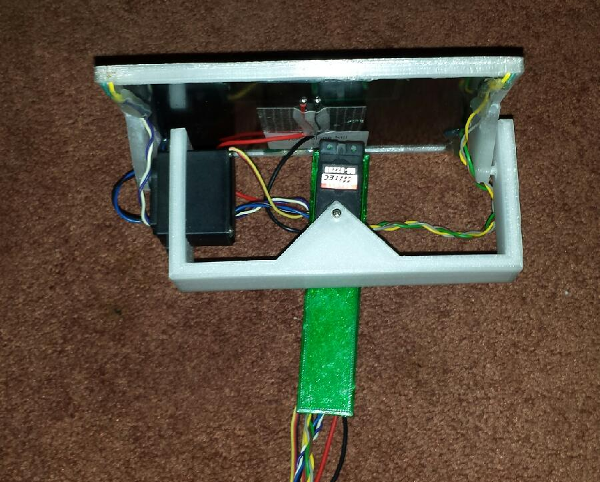
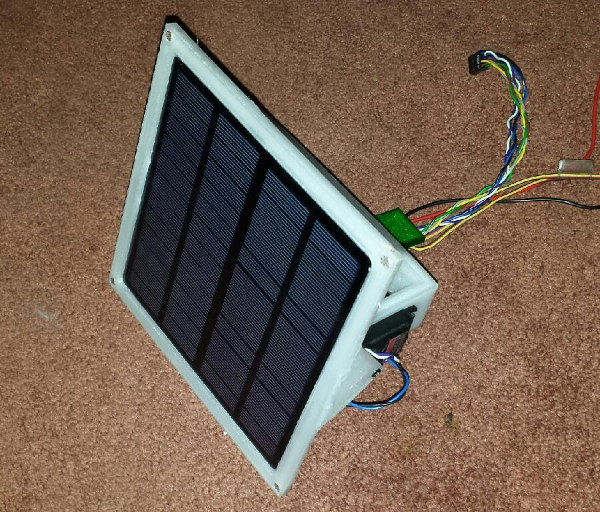
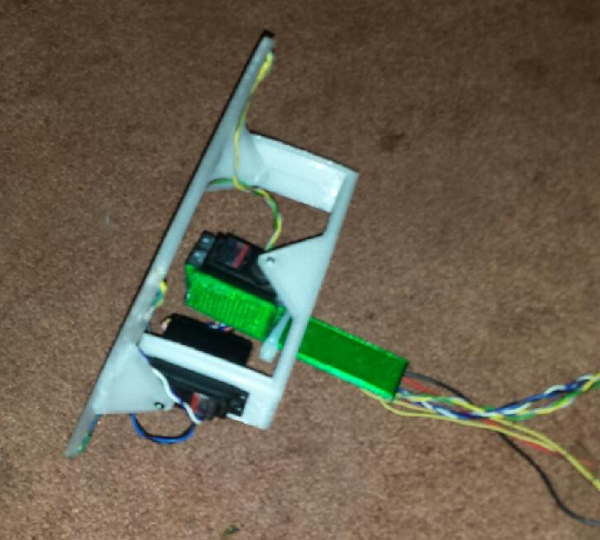
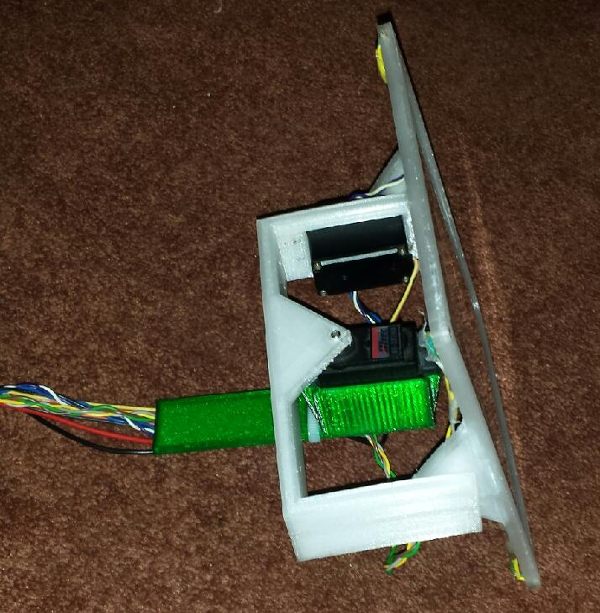
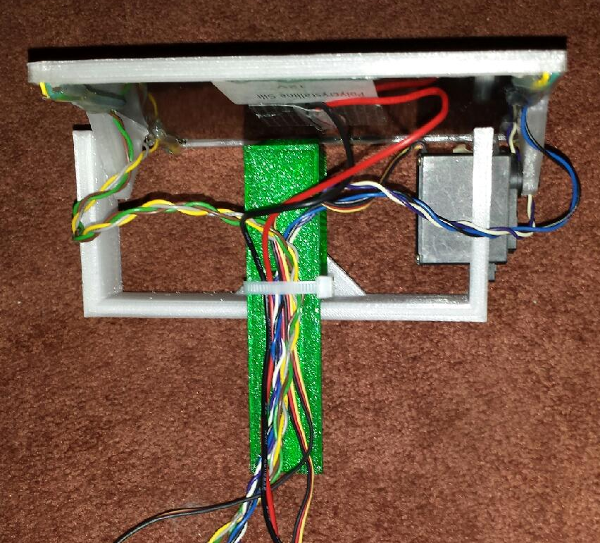
-
@dbemowsk is the solar tracker really necessary?
-
@gohan Not sure, just thought it might be an addition that could maximize battery charging.
-
it sure does, my question is if it is really needed. A lot depends on how much energy it uses

-
Hello,
For a project wtih a fablab, we have using a Li-Polymer Charge Management Controllers MCP73831
You can have free "sample" for prototype if you ask directly to the factory, perhaps it could be faster.